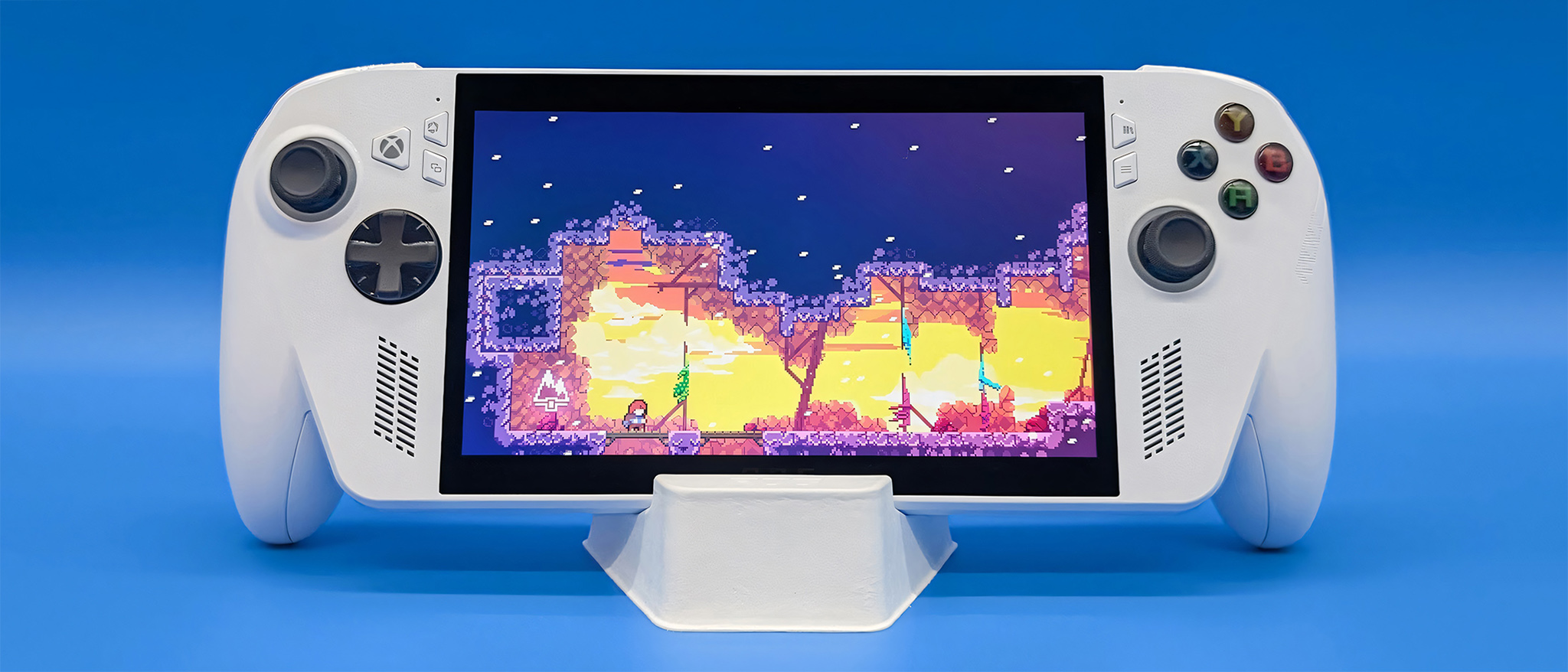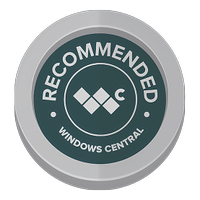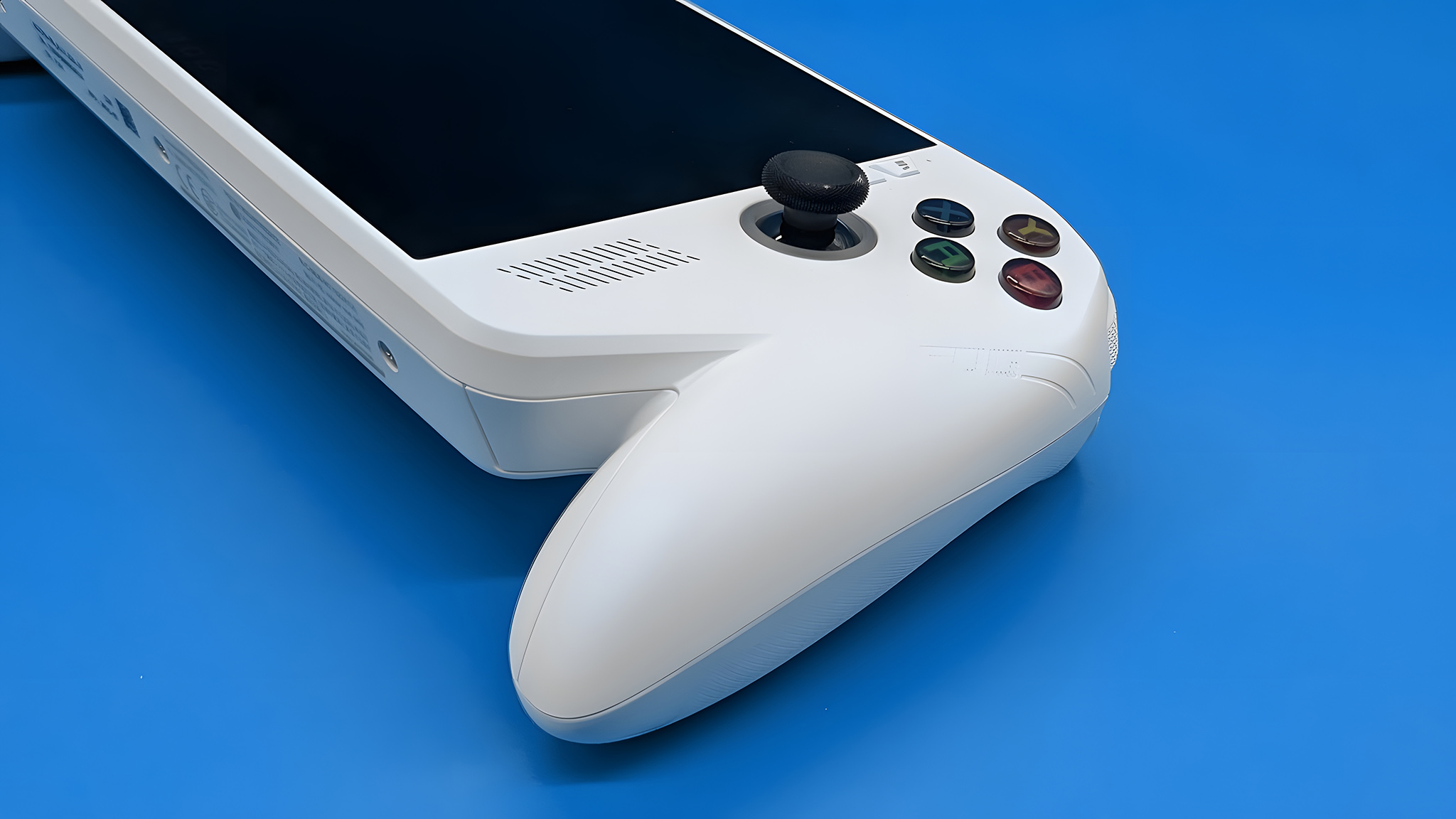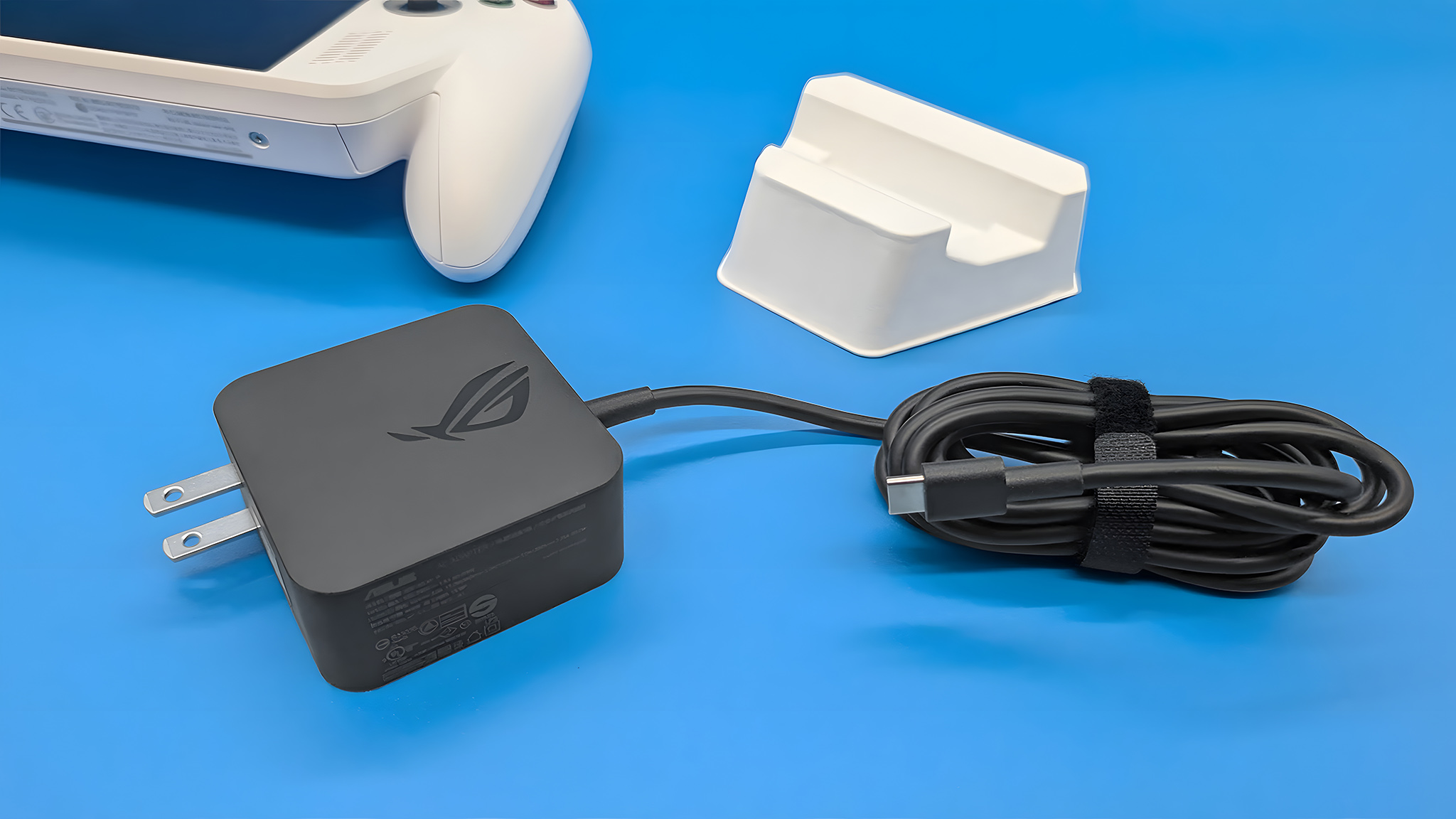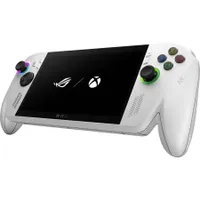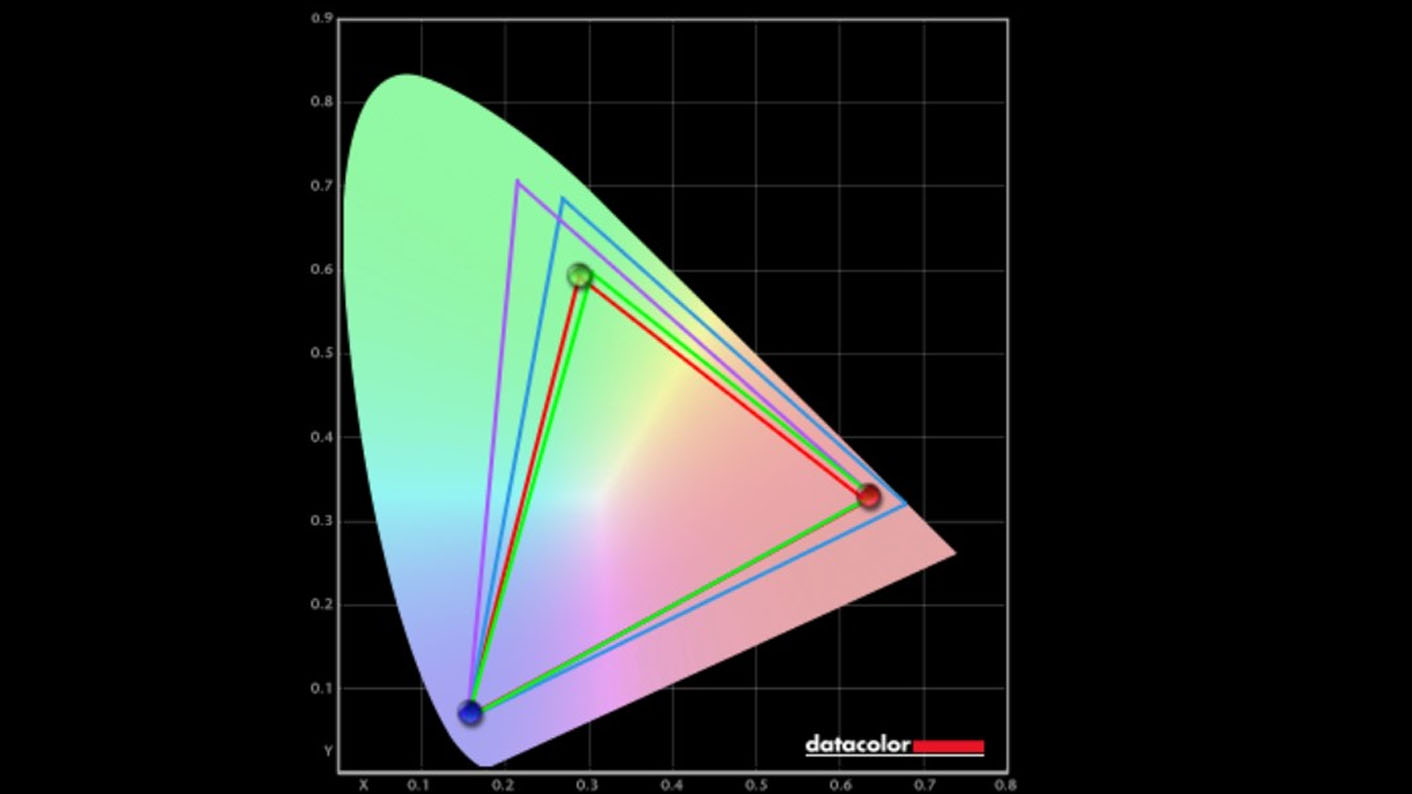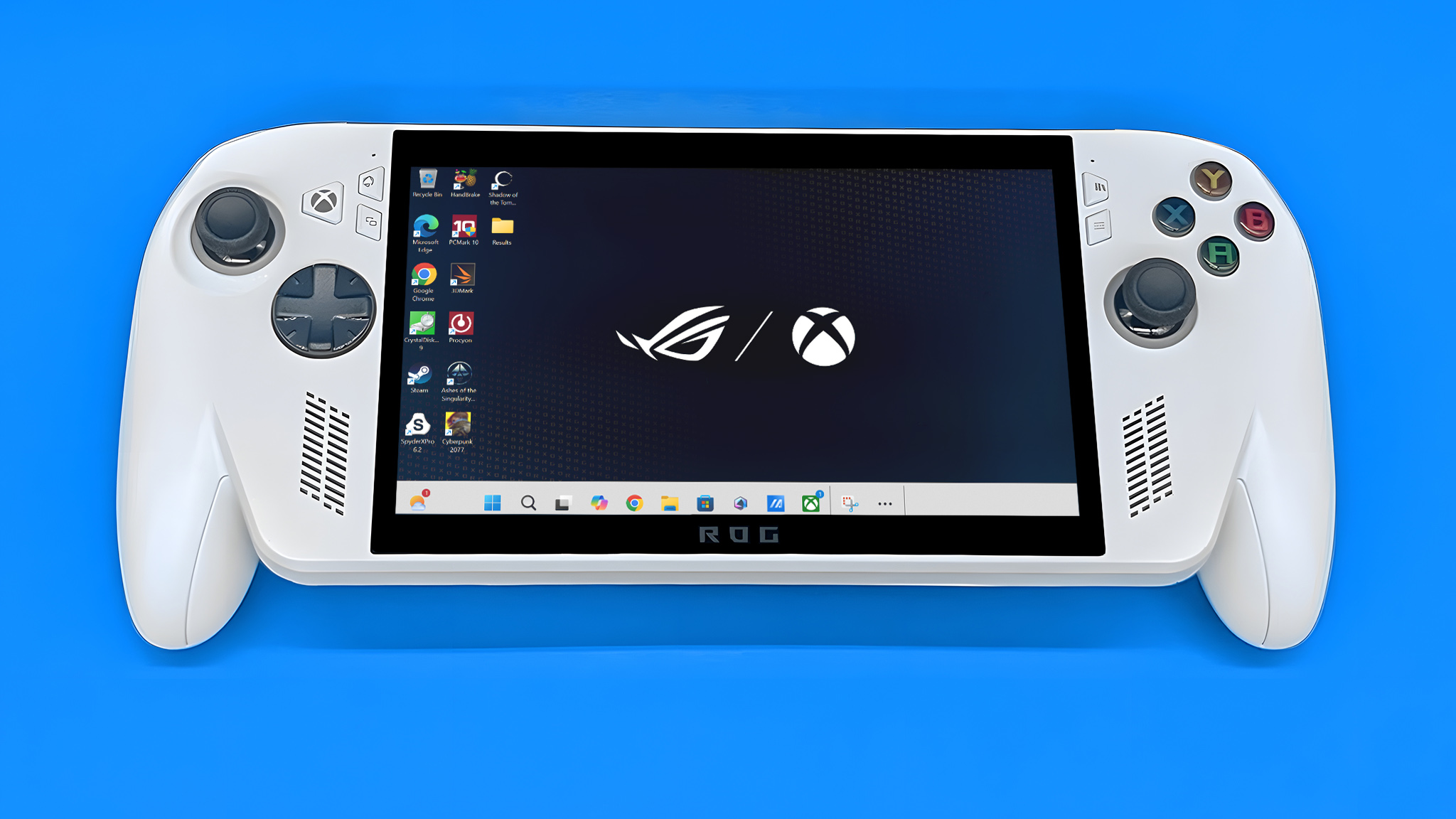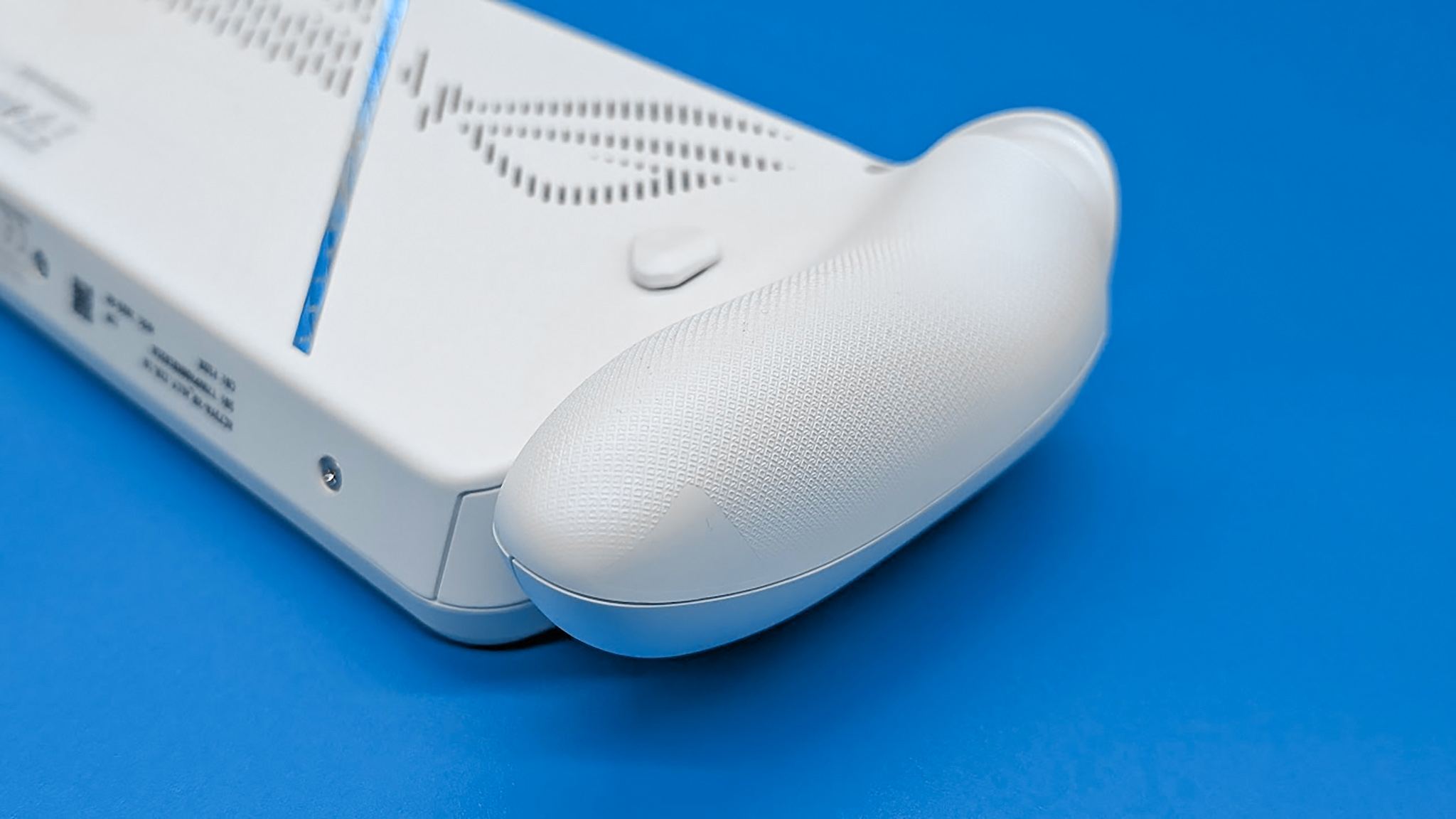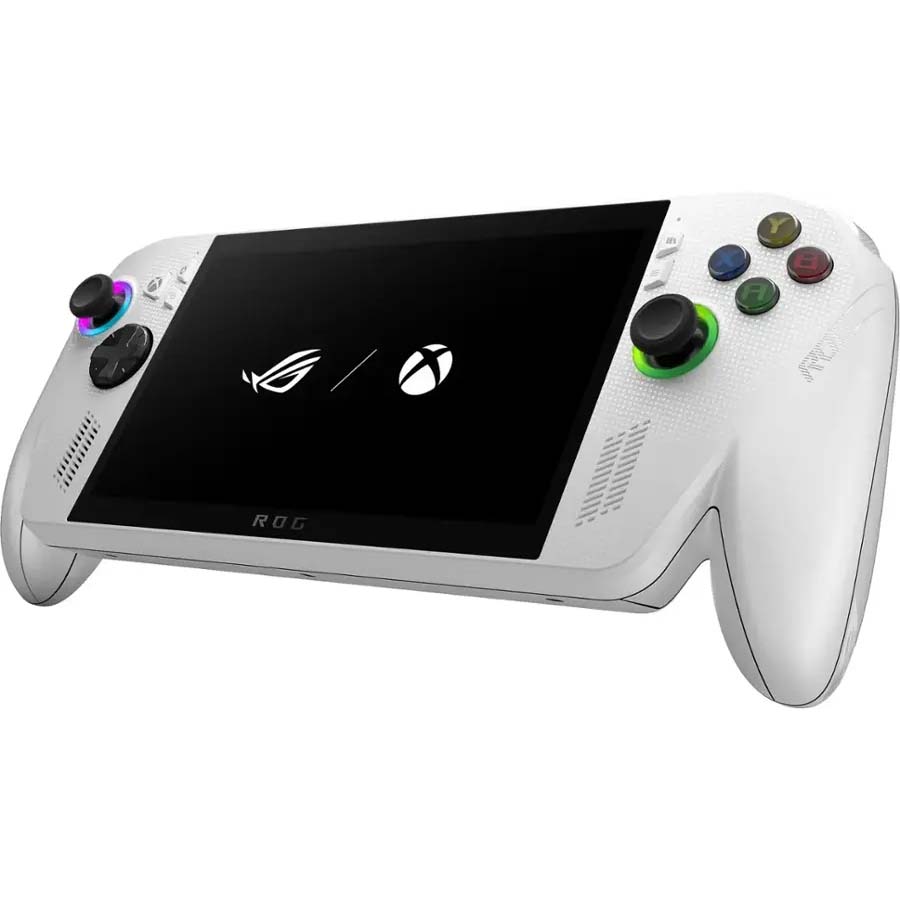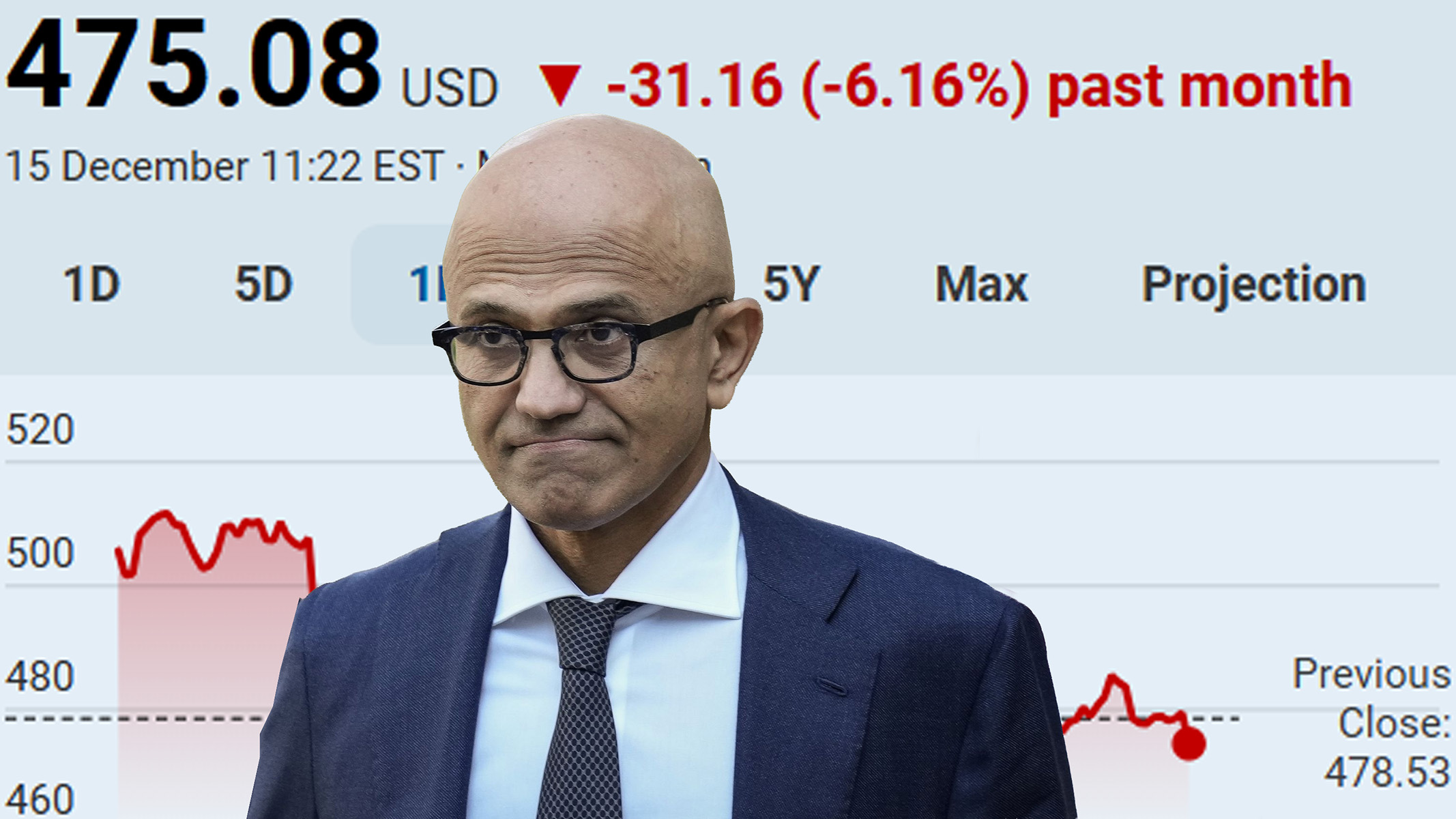Windows Central Verdict
The ROG Xbox Ally is a modest handheld that offers performance that's more on the level of the Steam Deck, making it one of the most direct competitors to Valve's device. Ergonomic grips, a relatively low cost, silent fans, and a good 7-inch IPS display are all attractive features. However, its modest performance and low storage capacity will not suit everyone's needs. If you're looking for a Windows handheld that's ideal for cloud gaming or running simpler graphics games locally, then this could be a good fit for you.
Pros
- +
Ergonomic grips inspired by the Xbox Controller
- +
Silent fans and efficient cooling
- +
Good color and motion clarity from 7-inch IPS display with 120Hz and VRR
- +
Dual USB-C ports for charging and accessories
- +
One of the most affordable Windows handhelds on the market
Cons
- -
Relatively small storage for gaming
- -
Doesn't support HYPR-RX features
- -
Z2 A processor is only on the level of the Steam Deck
Why you can trust Windows Central
A couple of years ago, ASUS ROG released the Ally, the first Windows handheld gaming PC from a mainstream OEM (original equipment manufacturer), and despite strong competition from the established Steam Deck, this device managed to make a place for itself among PC gamers.

In my ROG Ally review, I noted that it offered strong handheld performance (for the time), but had a short battery life. I later updated the review after several updates released, improving performance even further.
Now that time has passed, ASUS ROG has found a way to make its next-gen device appealing by partnering with Microsoft to create the Xbox Ally, a Windows handheld that improves upon the Ally classic.
Unlike the more powerful Xbox Ally X, this more affordable white handheld utilizes a relatively modest AMD Z2 Series processor that offers performance more on the level of the Steam Deck. I spent dozens of hours playing games and running benchmarks on it to see how well it really performs.
While it is less expensive than most other current-gen Windows handhelds, it might not suit every gamer's needs. Here's what you need to know about it.
This review was made possible thanks to a review sample provided by ASUS ROG/Microsoft. The company had no input nor saw the contents of this review prior to publication.
PRICE ⭐⭐⭐
This white Xbox Ally sells for $599.99 at Best Buy, which makes it the least expensive Windows handheld gaming PC at the retailer right now. However, it remains a relatively expensive device, considering the modest performance it offers.
Perhaps, if you can grab the Xbox Ally at a discount, it can make this a better purchase. That said, there are some rival devices that periodically go on sale and come down to this price point.
It's worth noting that the Xbox Ally has effectively replaced the starting option for the classic ROG Ally, which had the same MSRP, but is no longer available in most stores.
On another note, the Xbox Ally has similar internals to the 512GB Steam Deck OLED, which costs $549.00 at Steam. However, these two devices offer several feature tradeoffs, including running SteamOS versus running Windows 11.
As such, if you're looking for an entry-level handheld gaming PC, you'll want to consider the pros and cons between getting the Xbox Ally and the Steam Deck.
WHAT'S IN THE BOX?
In addition to the handheld, the ROG Xbox Ally box contains a manual, a cardboard stand, and a 65W charger cable. It does not come with a carrying case like the Steam Deck or Legion Go 2 does.
This white Xbox Ally provides excellent grips, responsive controls, and a convenient Xbox button for accessing Xbox Game Bar. It's the Windows equivalent rival to the Steam Deck.
👉 See at: Best Buy
DESIGN & UPGRADABILITY ⭐⭐⭐⭐⭐
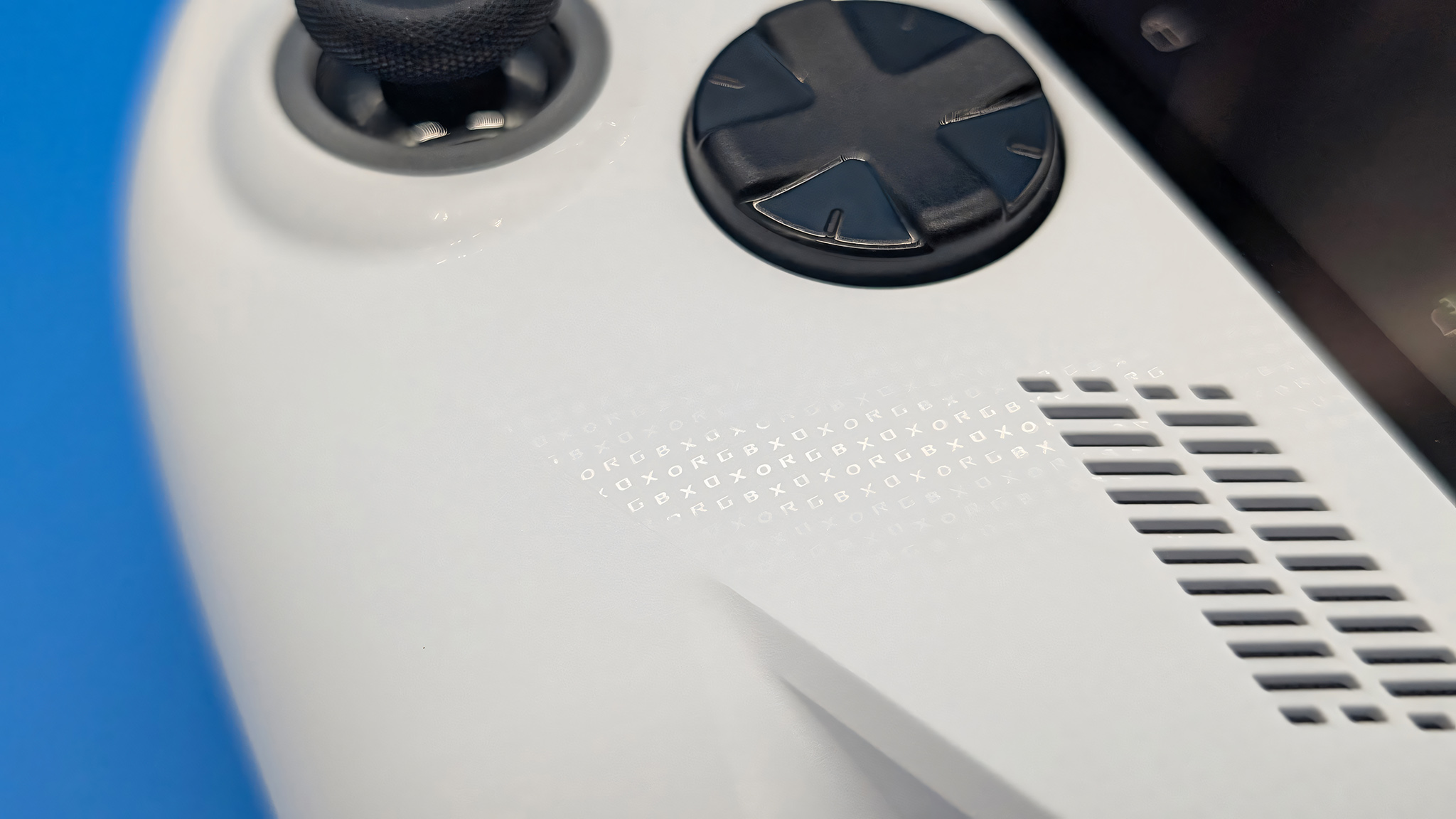
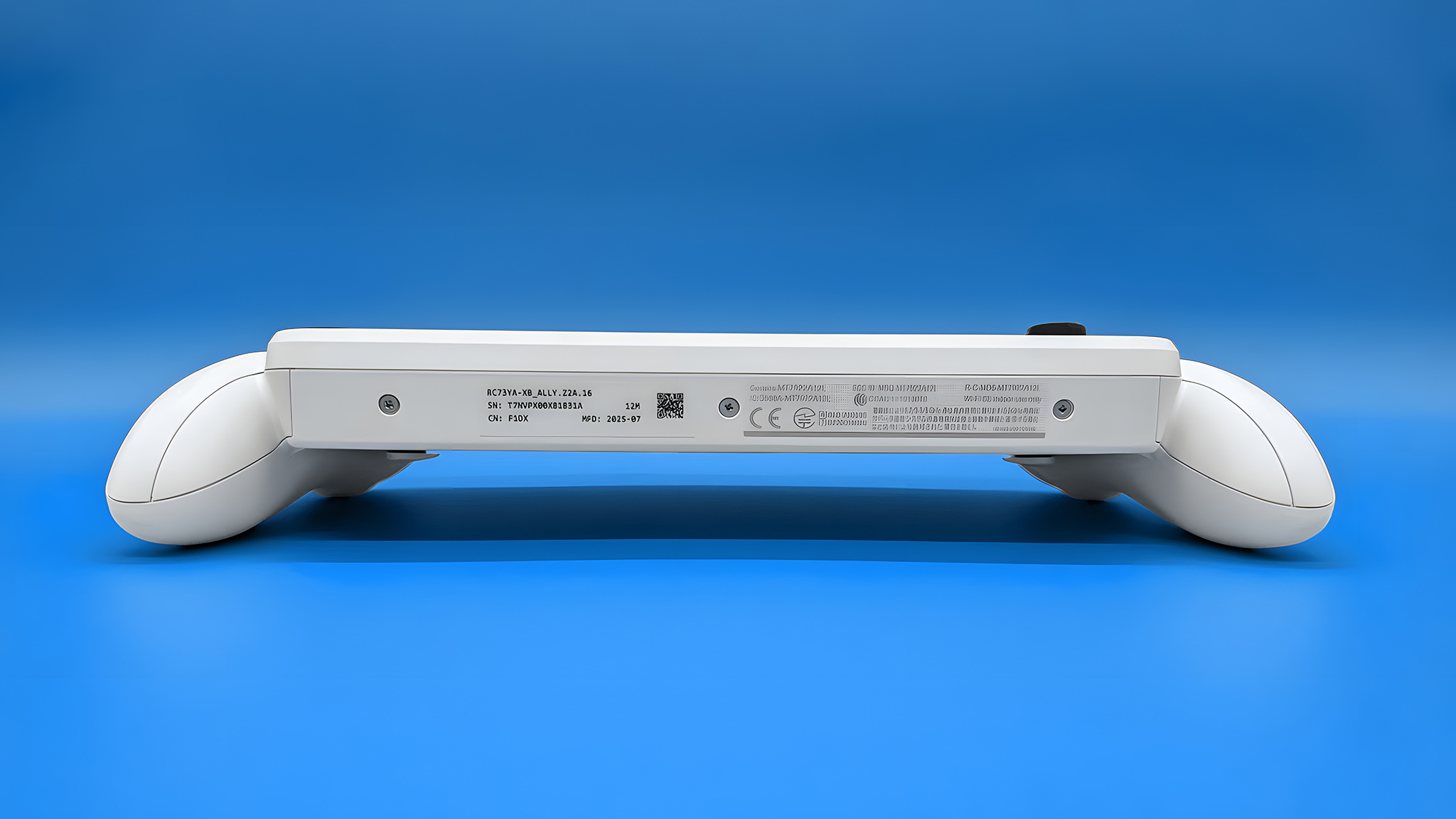
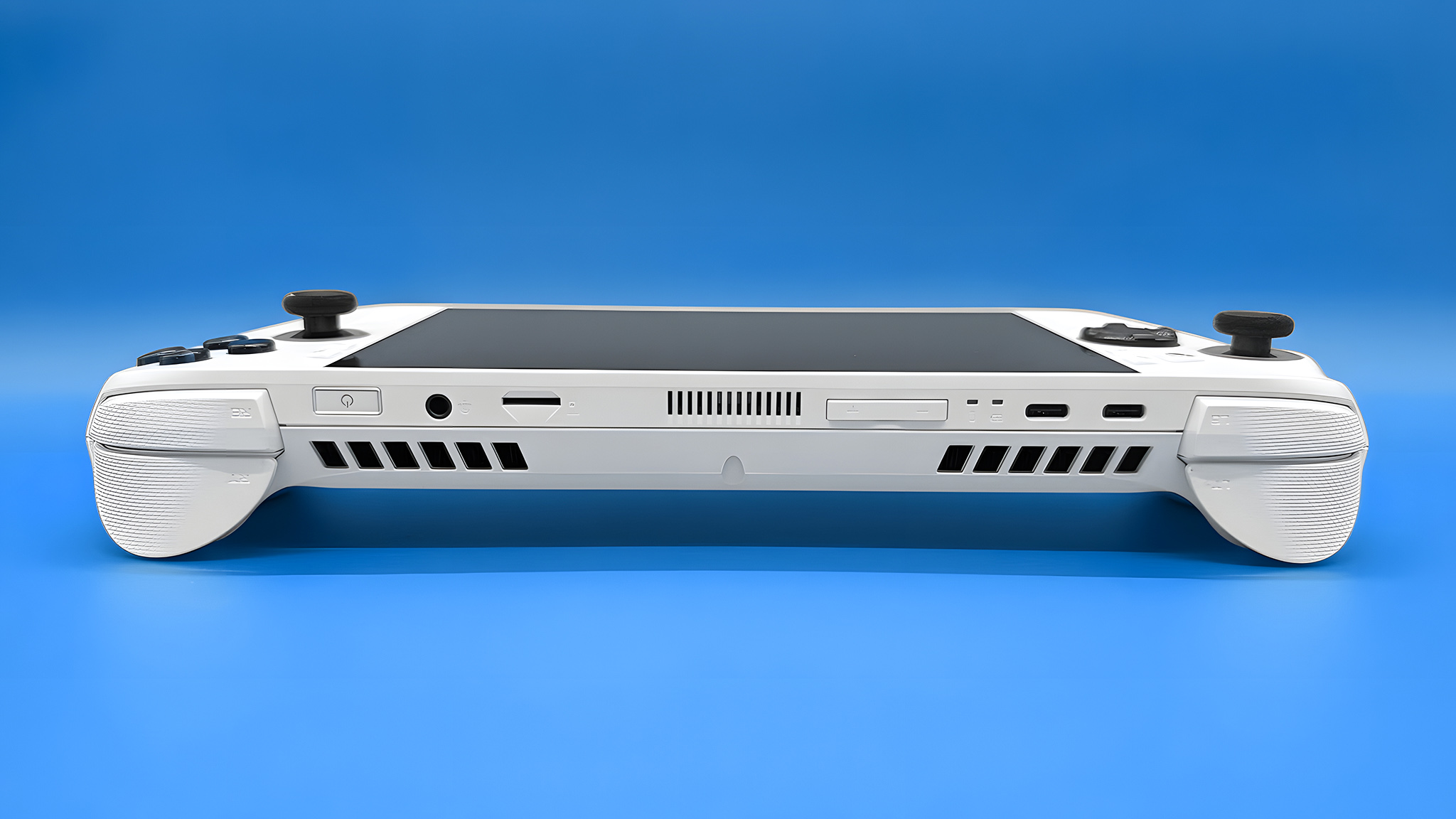
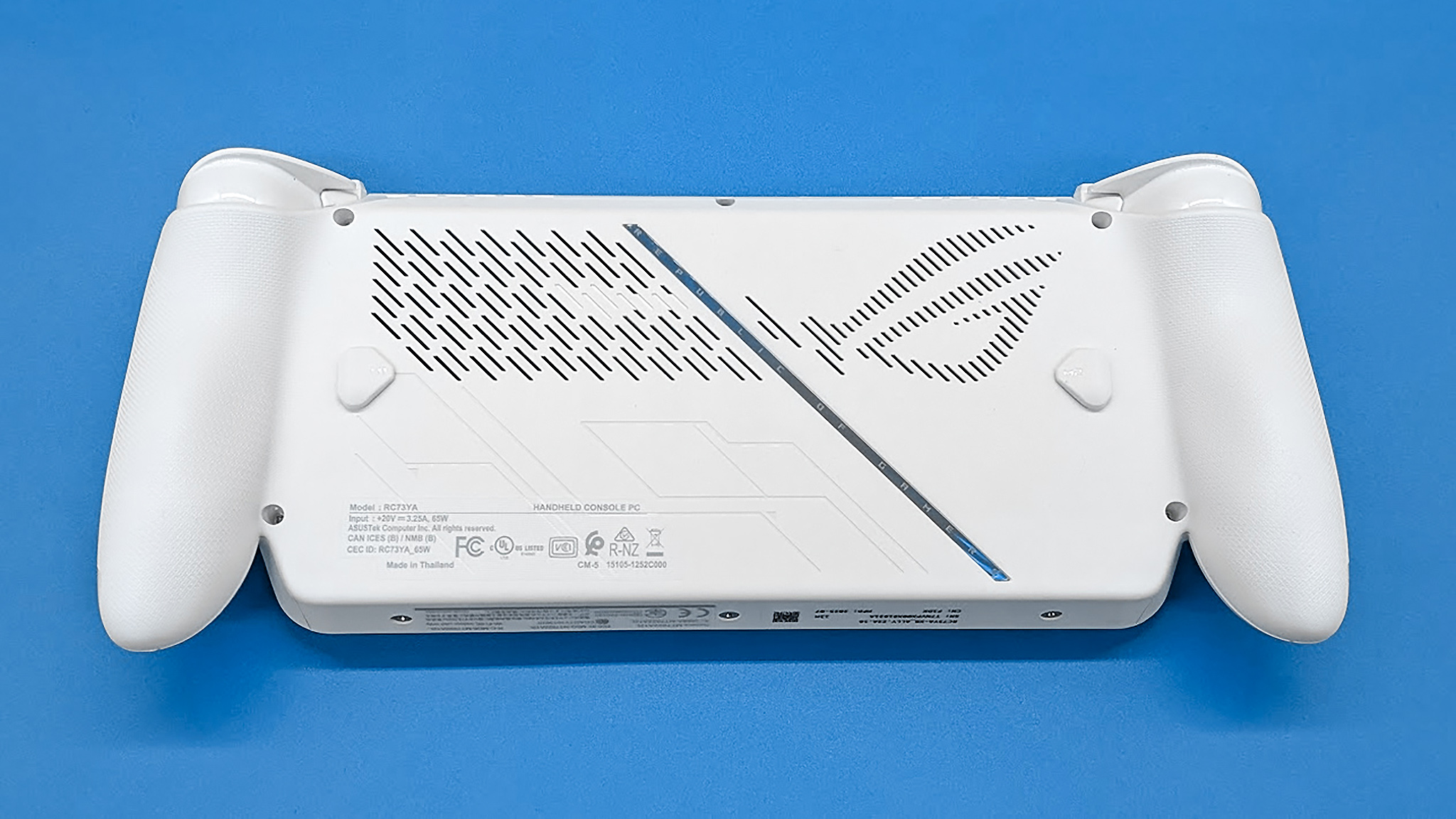
It's hard not to love the Xbox Ally's shiny new design, which puts an emphasis on ergonomics and comfort.
• Price: $599.99 at Best Buy
• Display: 7-inch FHD (1920 x 1080) 16:9 IPS touchscreen, 120Hz, 500 nits, VRR
• CPU: AMD Ryzen Z2 A, 4 cores, 8 threads (6-20W TDP)
• GPU: AMD Radeon RDNA 2 Graphics, 8 cores
• Memory: 16GB LPDDR5X-6400
• Storage: 512GB M.2 2280 SSD
• Connectivity: Wi-Fi 6E + Bluetooth 5.4
• Ports: 2x USB-C 3.2 Gen 2, 1x UHS-II microSD card reader, 1x 3.5mm headphone jack
• Battery: 60Whr
• Size: 11.45 x 4.78 x 1.99 (290.8 x 121.5 x 50.7mm)
• Weight: 1.4 lbs (670g)
The first thing you likely notice when looking at it is its relatively enormous grips, which were inspired by the official Xbox Controller. They are far more ergonomic than any other handheld out there right now (aside from the Xbox Ally X) to the point that this is the only handheld I've ever used that doesn't make my pinkies go numb.
Perhaps, the subtlest thing about the white Xbox Ally is the pattern that runs down its front, repeating the words "Xbox" and "ROG" over and over. Meanwhile, "ROG" is repeated all over the grips, providing texture so the handheld is less likely to slip.
On top of the handheld, there is a power button, a headphone jack, a microSD card reader, volume buttons, and two USB-C 3.2 Gen 2 ports. These features in addition to Wi-Fi and Bluetooth make connecting various accessories a relatively easy feat.
WHAT ABOUT UPGRADEABILITY?
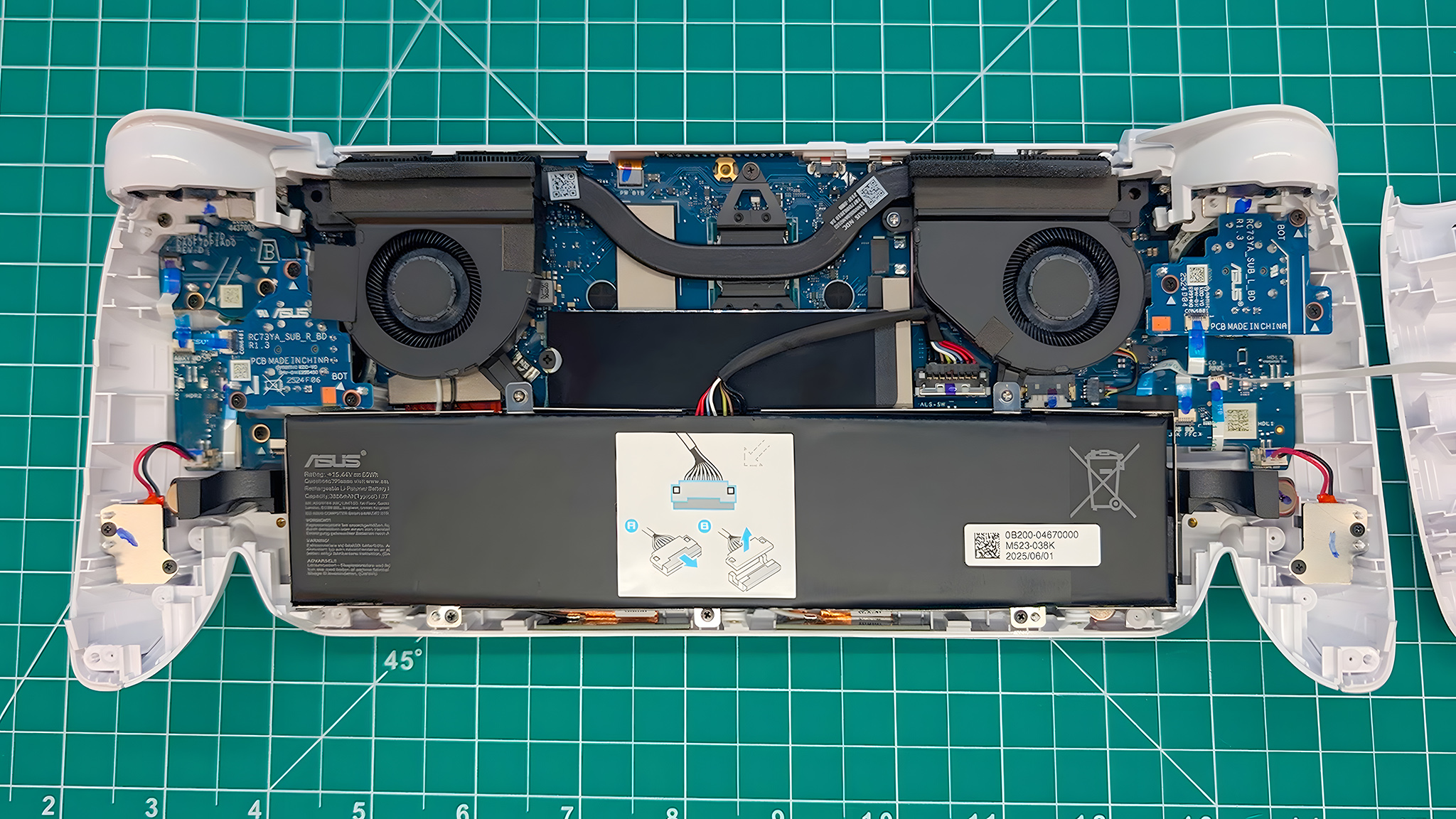
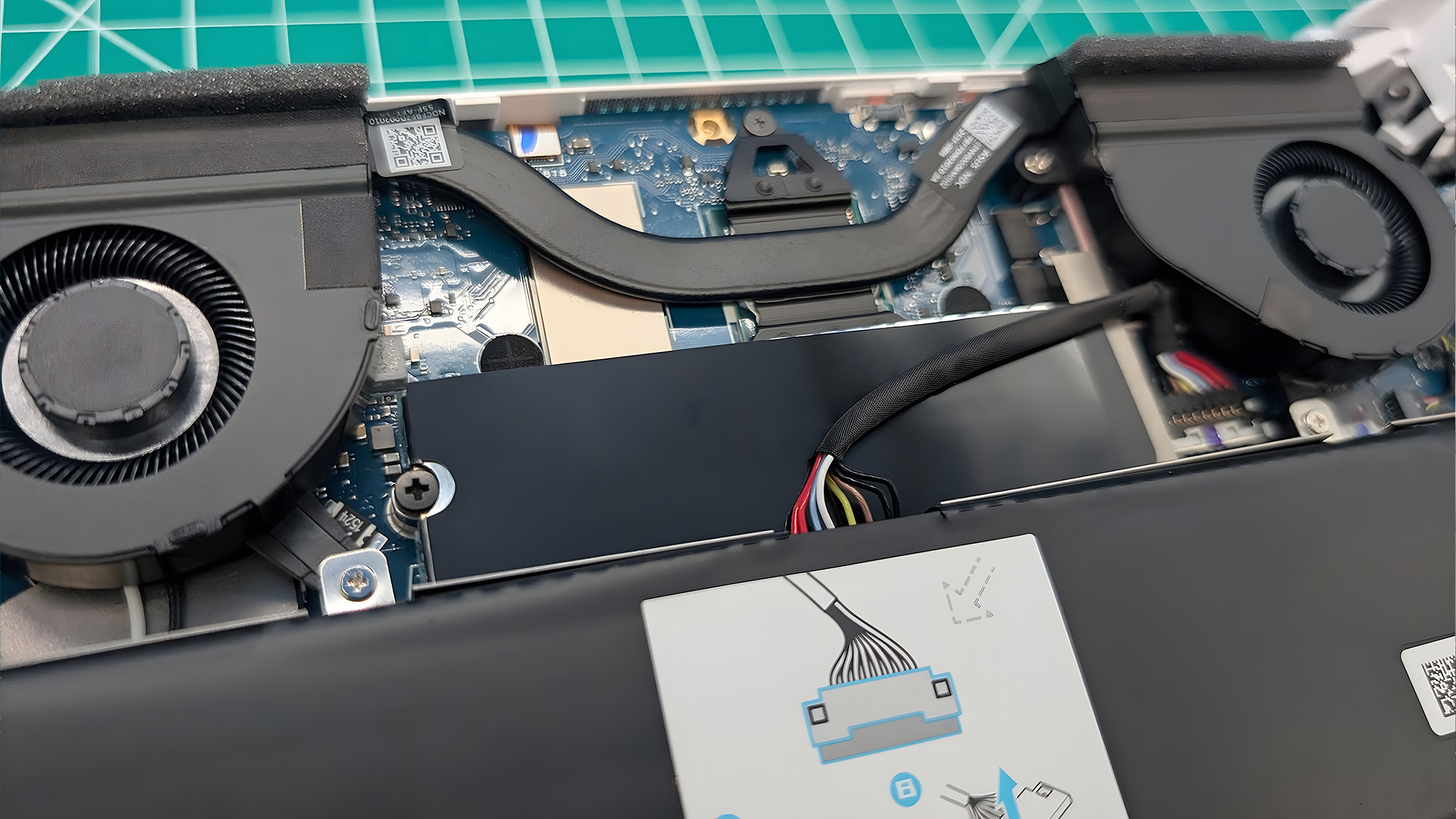
In order to open the Xbox Ally, you simply have to remove the five screws on the back of the device, followed by the three screws on the bottom, and then gently pry it apart with a prying tool.
This handheld was designed with upgradeability in mind, so the SSD is immediately accessible for easy swapping. If you do decide that the 512GB SSD isn't big enough for your needs, you can purchase one of SanDisk's new WD_BLACK SSDs made exclusively for the Xbox Ally handhelds.
I was able to take the battery out rather quickly, and there are even instructions on it telling you how to remove the battery cable correctly, so if a third party sells replacement batteries, this should be easy enough to upgrade.
BUTTONS & JOYSTICKS ⭐⭐⭐⭐ 1/2
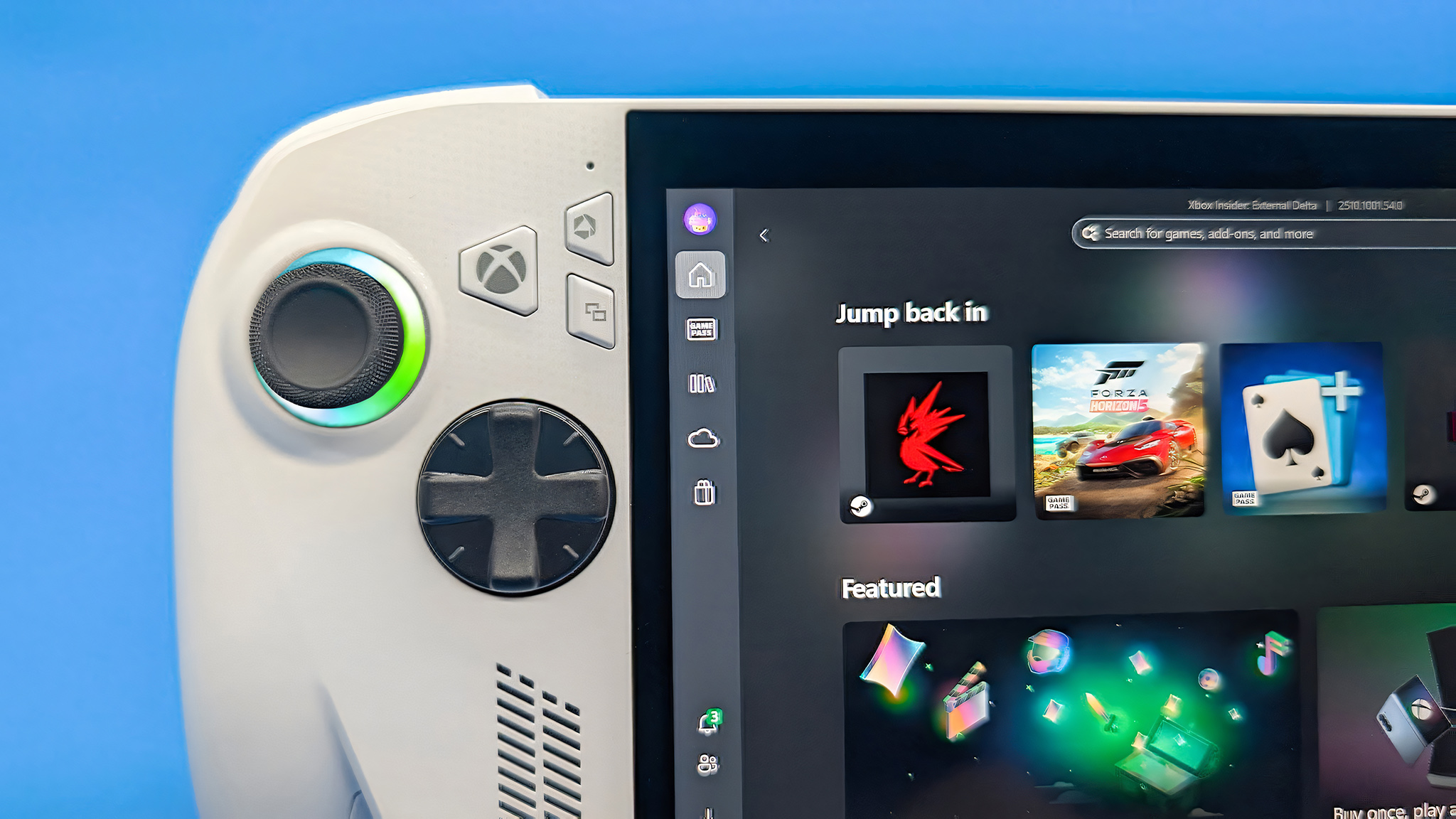
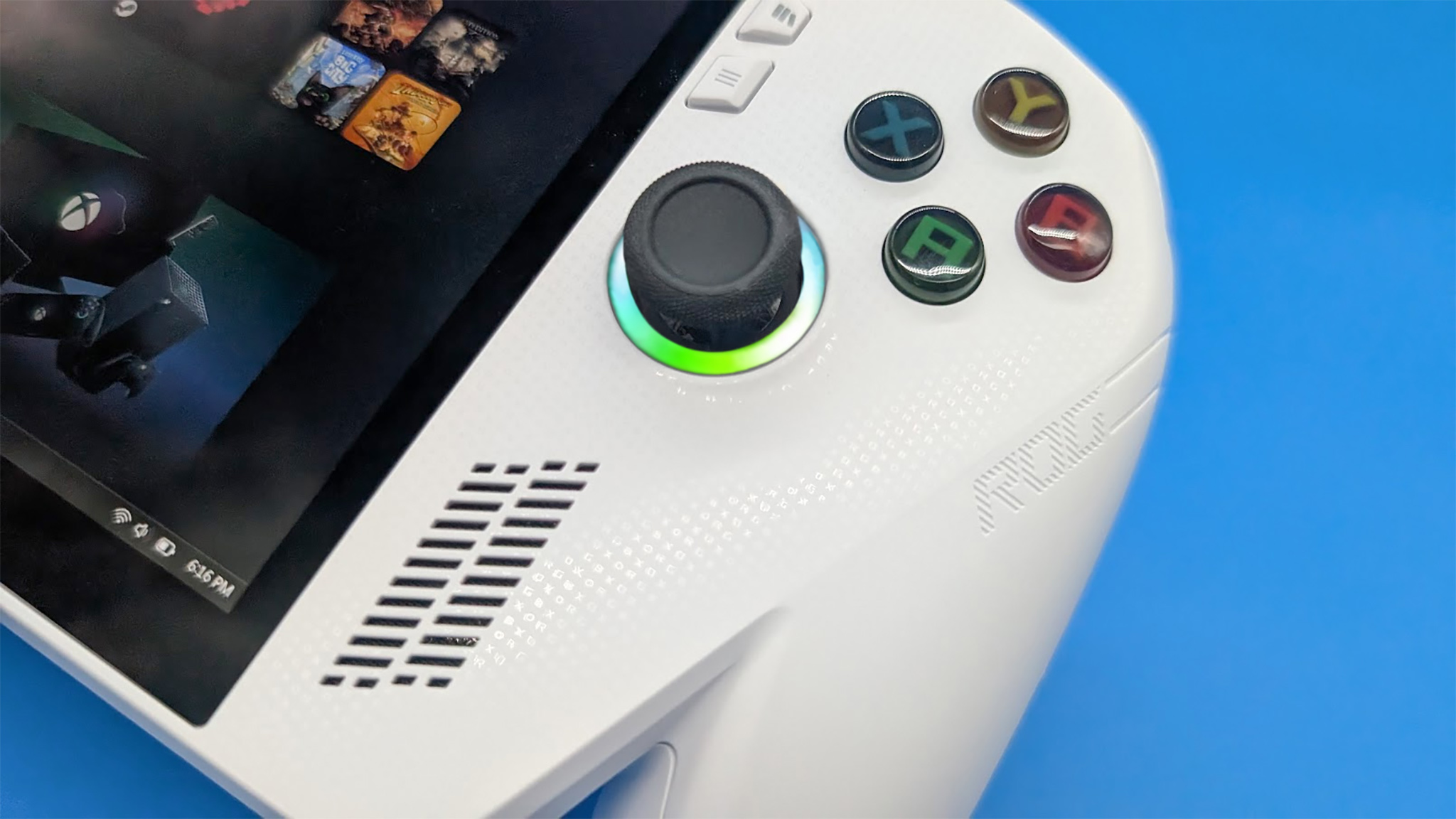
Continuing the theme of comfort, the Xbox Ally's buttons, bumpers, triggers, and joysticks are all located within easy reach, meaning I don't have to strain my fingers like I do with some other handhelds.
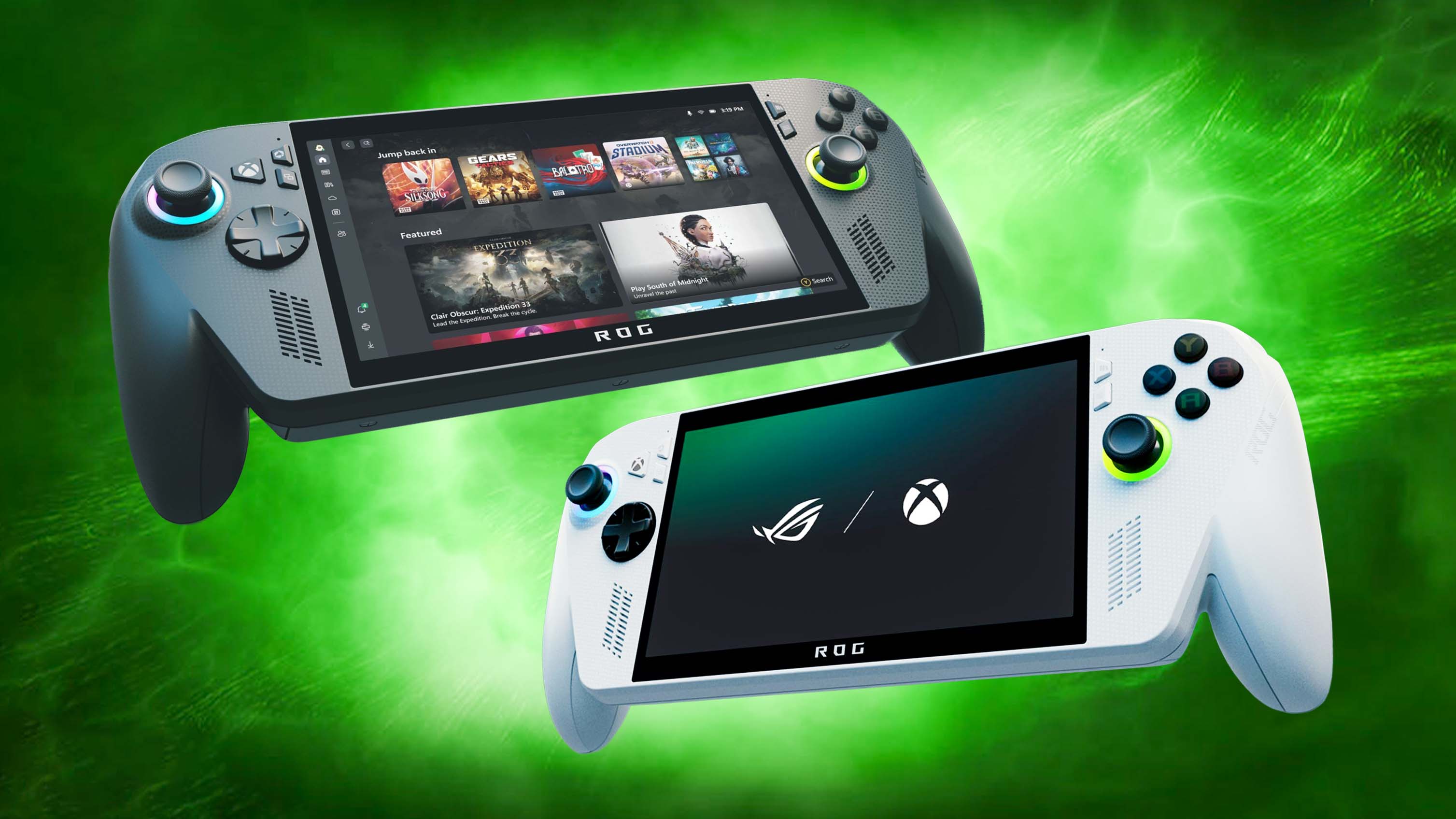
• Xbox Ally X handheld compatibility system
• Legion Go 2 vs Xbox Ally X
• Xbox Ally vs Steam Deck
• Xbox Ally X vs ROG Ally X
• Xbox Ally vs ROG Ally
• Best Xbox Ally accessories
• Best Xbox Ally power banks
• Best Xbox Ally microSD cards
It's worth noting that the Xbox Ally doesn't have Hall effect joysticks, but this isn't something I'd expect on a device in this price range.
A design flaw with the classic ROG Ally was that the back M1 and M2 buttons were large and easy to press by accident. This is not an issue with the Xbox Ally, whose back buttons are smaller and pushed further toward the middle of the device, so I only touch them when I mean to.
One of the most notable differences between this handheld and the classic one is the addition of a large Xbox button between the left joystick and the display. Tapping this brings up the Xbox Game Bar.
As far as responsiveness goes, the ABXY buttons, Menu button, View button, D-Pad, and joysticks all respond beautifully to my presses, keeping up with my gaming sessions. However, the Armoury Crate button to the left of the screen can sometimes take a while to bring the Command Center side menu up, making it take longer to change system settings (more on the software later).
Players can take the time to set up Windows Hello biometric login by specifically using the power button that doubles as a fingerprint reader. In my experience, this method doesn't always work, which takes away from its overall convenience.
All in all, the Xbox Ally's main gaming controls are very responsive and work as expected. However, you sometimes have to be patient with the Armoury Crate button and fingerprint login.
DISPLAY ⭐⭐⭐⭐⭐
As with the original ROG Ally, the Xbox Ally features a 7-inch IPS touchscreen that produced 97% of sRGB in a color gamut test, which is solid for this kind of screen.
It might not make colors pop against true black like an OLED does, but details come through crisply on the 1080p panel. Meanwhile, this display also supports VRR (variable refresh rate), AMD Freesync Premium, and 120Hz refresh rate to improve motion clarity in gaming.
Of course, the Xbox Ally, as a more affordable handheld, is not a powerhouse, so more processor-straining titles can run rather choppy on this device.
PERFORMANCE ⭐⭐⭐1/2
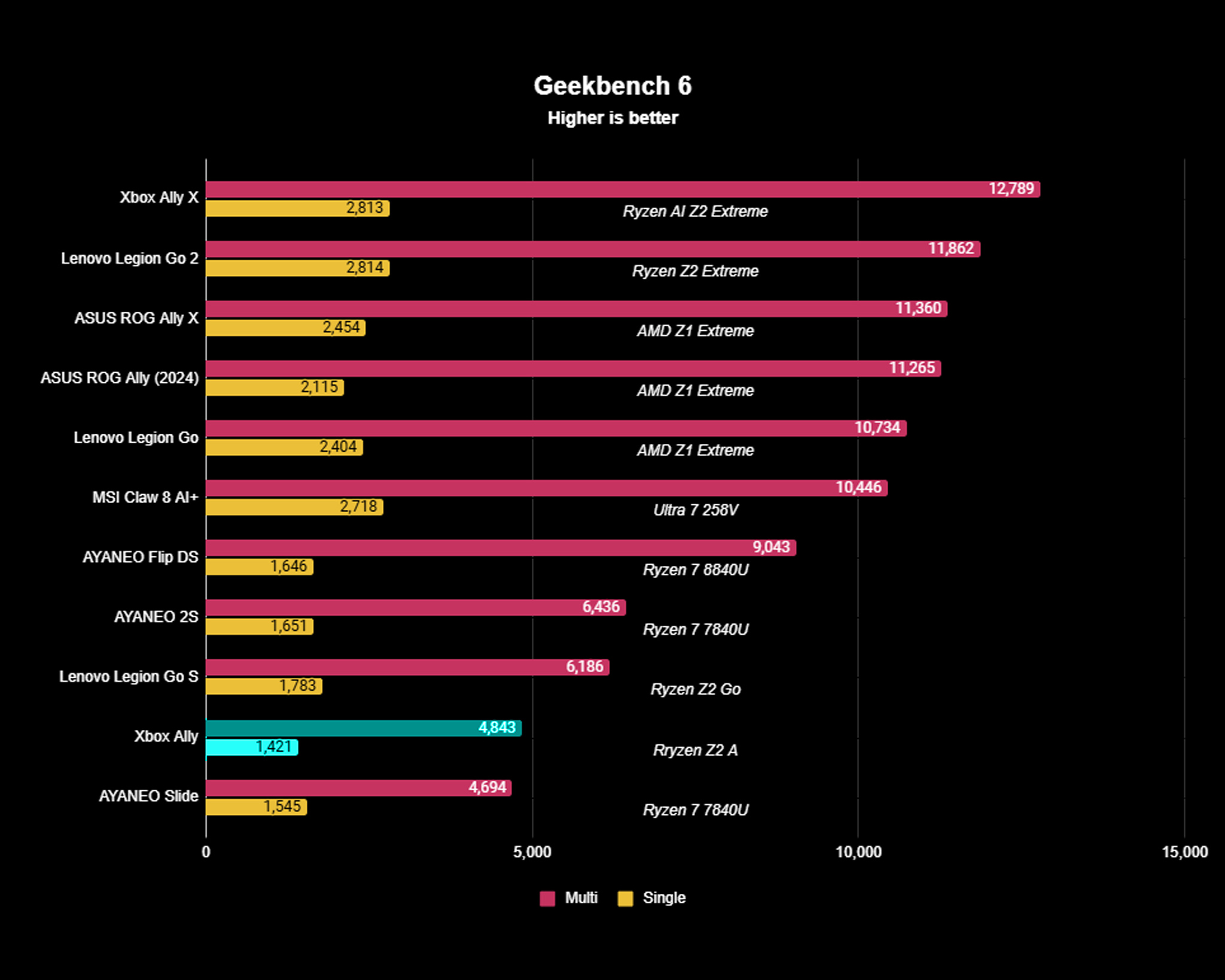
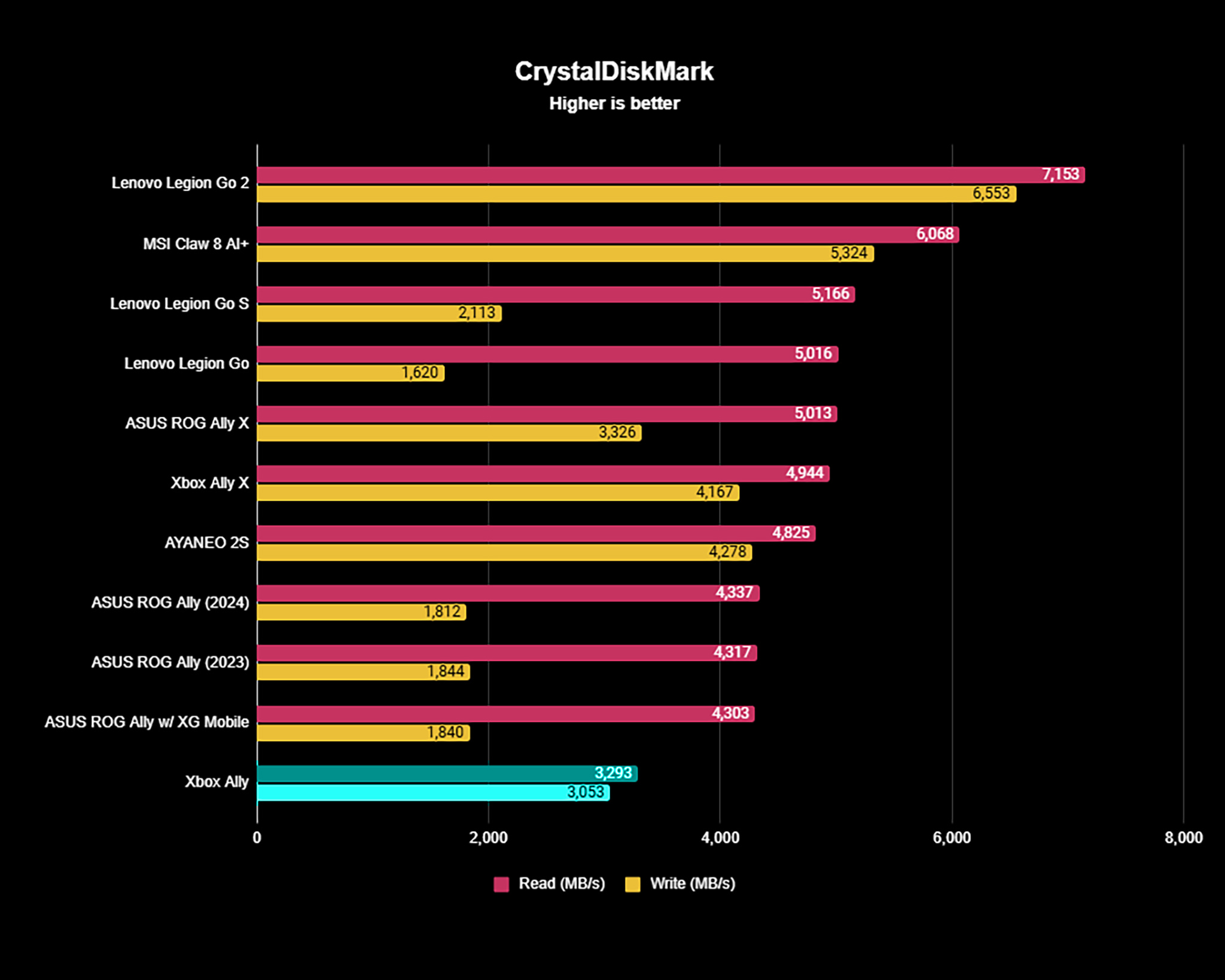
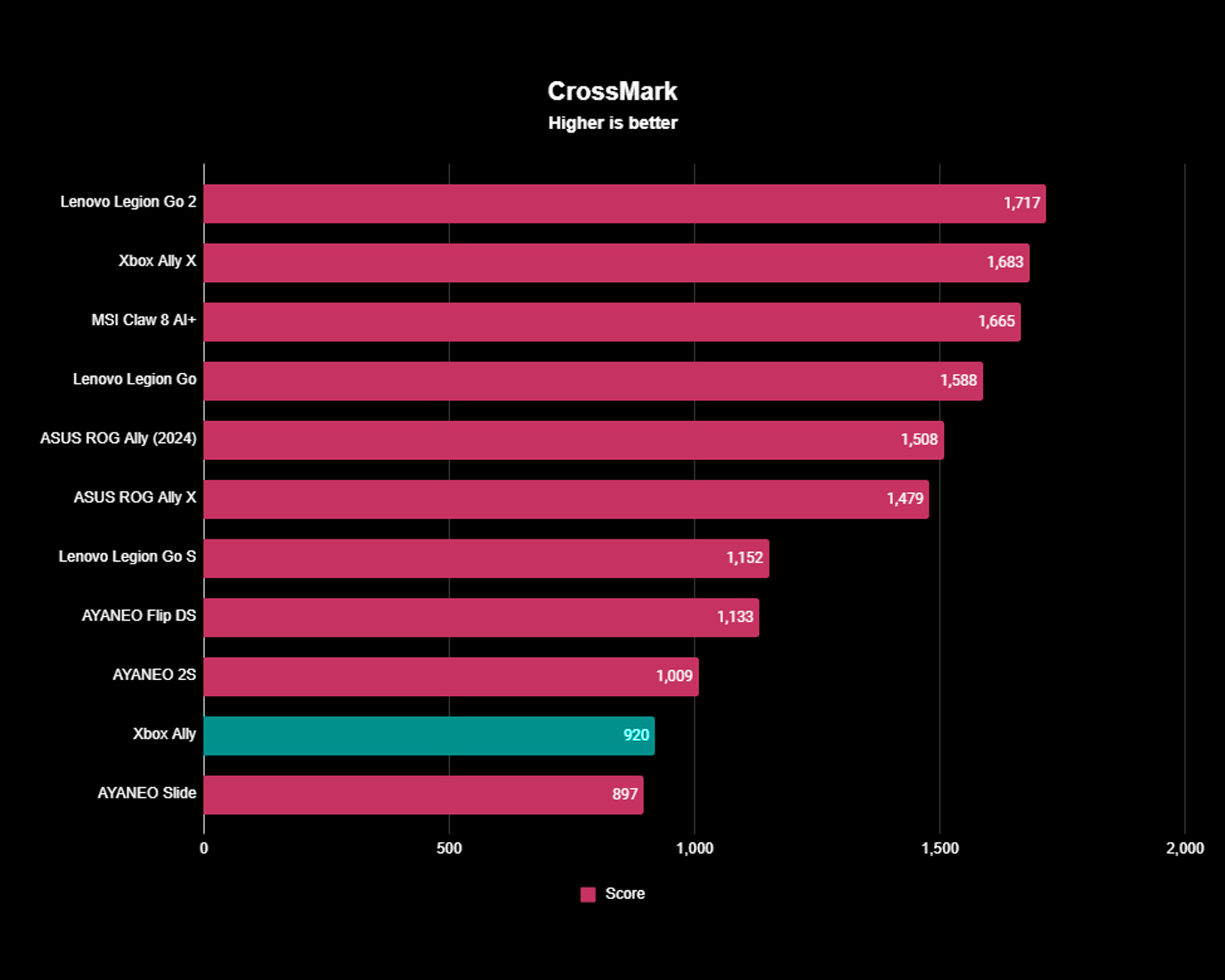
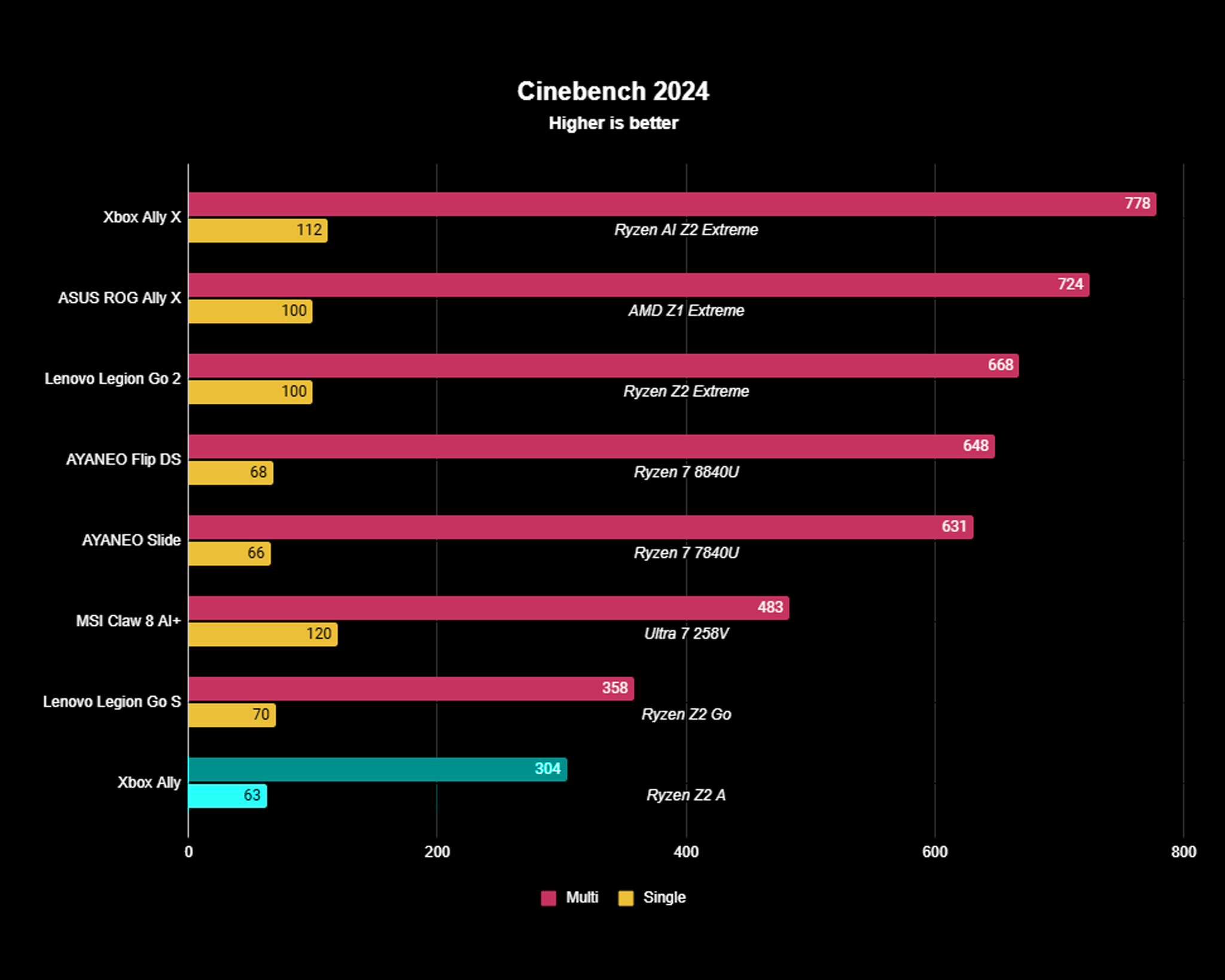
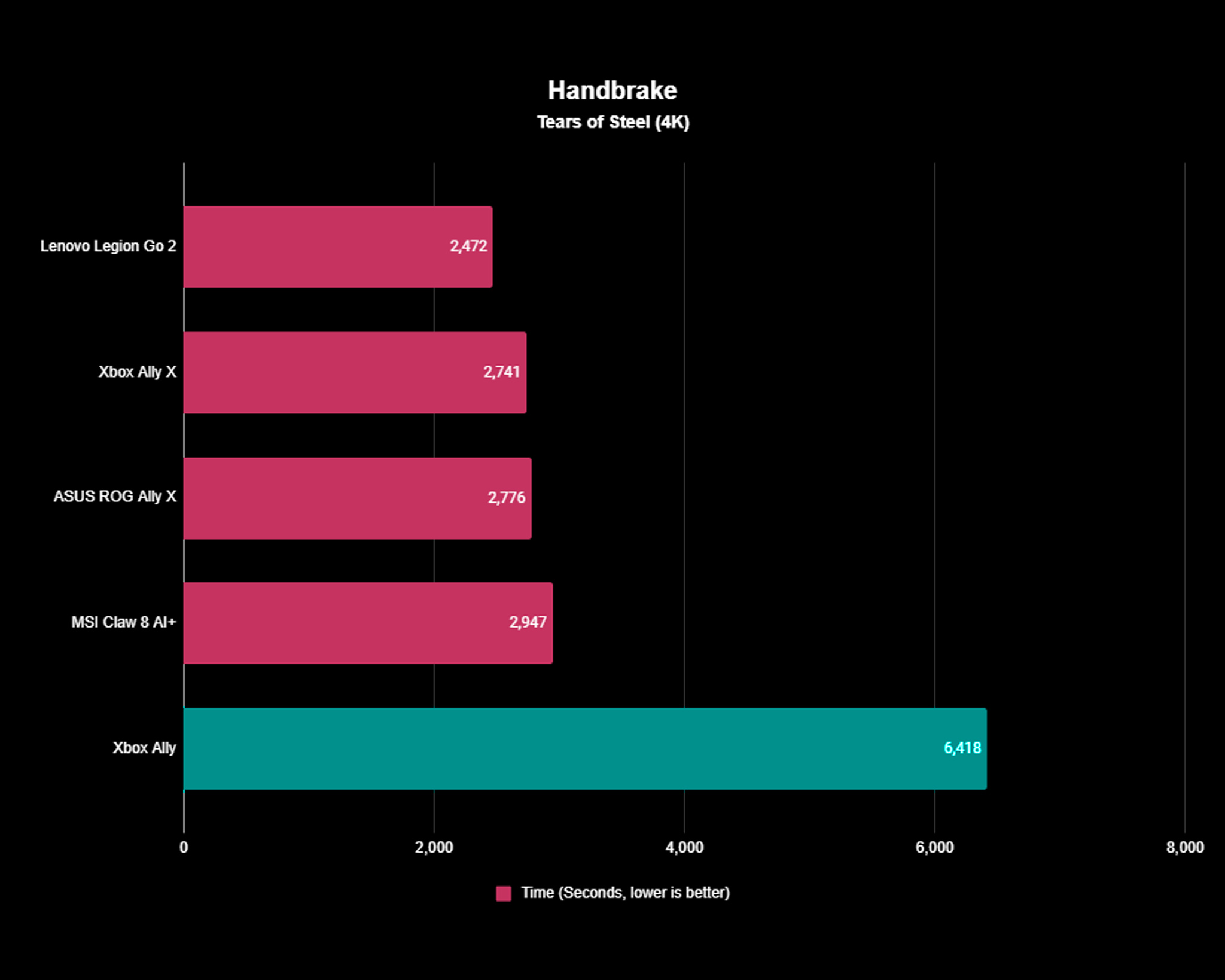
Over the last few days, I spent dozens of hours playing everything from simple pixel-art 2D platformers to open-world RPGs on the Xbox Ally. Performance is where I expected it to be, but it might not fit every gamer's needs.
The first thing you need to know about the Xbox Ally is that it utilizes an AMD Ryzen Z2 A processor, which has four cores, eight threads, and uses the same RDNA2 architecture that the Steam Deck's custom AMD processor does. Basically, on paper the Xbox Ally has the same performance level as the entry-level Steam Deck OLED, which also has 16GB RAM and 512GB SSD like the Xbox Ally does.
Now, the Steam Deck is obviously a very beloved handheld, but there's no denying that it cannot keep up with the latest AAA games or graphically intensive titles (unless they've specifically been optimized for it), and the same is true of the Xbox Ally. As a lower-tier Windows handheld gaming PC, this is expected.
The Xbox Ally really shines when it comes to playing simple graphics games like Among Us, Stardew Valley, Celeste, and Hollow Knight Silksong. Otherwise, it's an ideal cloud gaming device that also runs Windows.
In fact, NVIDIA GeForce NOW and Xbox Cloud Gaming pair extremely well with this handheld. As an example, when I ran Cyberpunk 2077 locally on the Xbox Ally using the Steam Deck graphics preset, it was only able to hit an average of 31 FPS (frames per second) while experiencing significant lag, screen tearing, and choppiness. But when I streamed Cyberpunk 2077 via GeForce NOW from a far more powerful server, I was able to get a buttery smooth 86 FPS.
But, if you were planning to use cloud streaming tech on this thing, you might as well use your phone or an iPad or something else lying around your house.
Gaming benchmarks
I ran the following tests while the Xbox Ally was set at Turbo 20W TDP, 4G VRAM, (and plugged in).
- Ashes of the Singularity — 42.8 FPS (Normal preset, 1080p resolution, 120Hz refresh rate, V-sync enabled) | 29.9 FPS (Heavy preset, 1080p resolution, 120Hz refresh rate, V-sync enabled)
- Cyberpunk 2077 — 31.24 FPS (Low preset, Path Tracing and Ray Reconstruction disabled, 1080p resolution, 120Hz, V-sync disabled, AMD FidelityFX Super Resolution 2.1 set to "Auto," frame generation disabled) | 27.32 FPS (Steam Deck preset, Path Tracing and Ray Reconstruction disabled, 1080p resolution, 120Hz, V-sync disabled, AMD FidelityFX Super Resolution 2.1 set to "Auto," frame generation disabled)
- Forza Horizon 5 — 17 FPS (Extreme preset, 1080p resolution, AMD FSR 2.2/Frame Generation/Reflex Low Latency disabled) | 43 FPS (Medium preset, 1080p resolution, AMD FSR 2.2/Frame Generation/Reflex Low Latency disabled)
- Shadow of the Tomb Raider — 25 FPS (High preset, 1080p resolution, V-sync enabled) | 21 FPS (Highest preset, 1080p resolution, V-sync enabled)
FYI: Something that drastically improves the more premium Xbox Ally X's performance are the game-enhancing HYPR-RX features found in AMD Software. However, while I can tweak various graphics tools under Performance in AMD Software, I don't have the option of enabling HYPR-RX on Xbox Ally.
PC benchmarks
AMD devices tend to offer better performance when they are plugged in, and the same is true for the Xbox Ally. I ran the following tests while the handheld was at its default VRAM allocation of 4G and set to Turbo (25W) TDP.
| Row 0 - Cell 0 | Plugged in | Unplugged |
Geekbench 6 (CPU) | 4,843 multicore score, 1,421 single-core score | 4,791 multicore score,1,375 single-core score |
Cinebench R24 (CPU) | 304 multicore score, 63 single-core score | 170 multicore score, 55 single-core score |
CrossMark (System performance) | 920 | 739 |
CrystalDiskMark (SSD speeds) | 3,293 MB/s read, 3,053 MB/s write | 3,207 MB/s read, 2,614 MB/s write |
Where the Xbox Ally X earned some of the highest scores we've seen so far in our Windows handheld PC benchmark testing, the Xbox Ally always got the lowest or second-lowest scores.
Once again, though. If you specifically want a handheld to play simple life sims or 2D platformers on, then this performance will be just fine. Otherwise, you might want to consider a more premium handheld like the Xbox Ally X.
The problem is that many of the 2D types of games that would be ideal on the Xbox Ally simply aren't present in the Microsoft Store, forcing you to defer out to Steam. If you need to do that, why not just buy a cheaper Steam Deck OLED instead?
Indeed, the issue isn't necessarily the hardware itself, but perhaps more the ecosystem attached to it. We'll discuss that more in the software ecosystem.
THERMALS & FAN NOISE ⭐⭐⭐⭐⭐
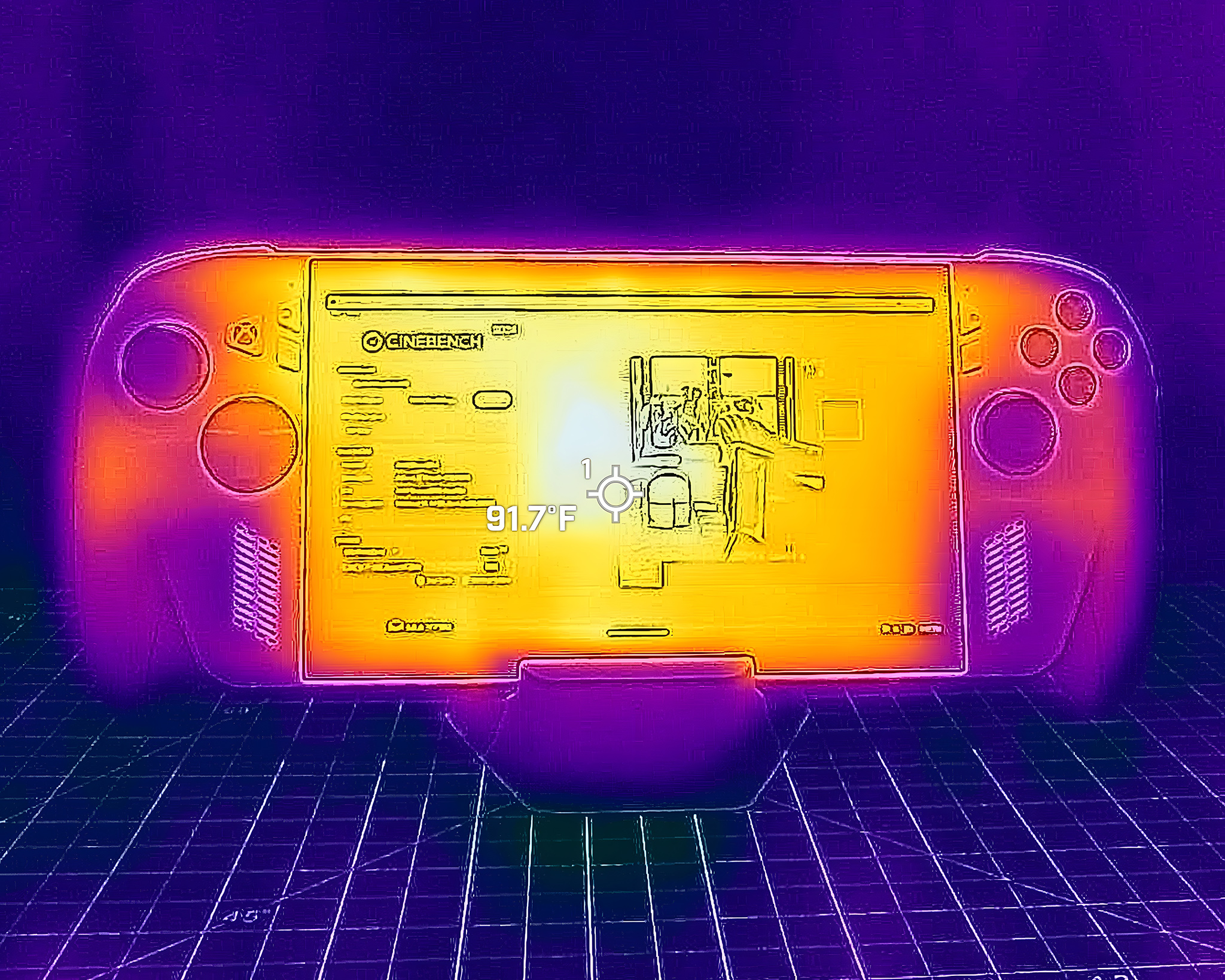
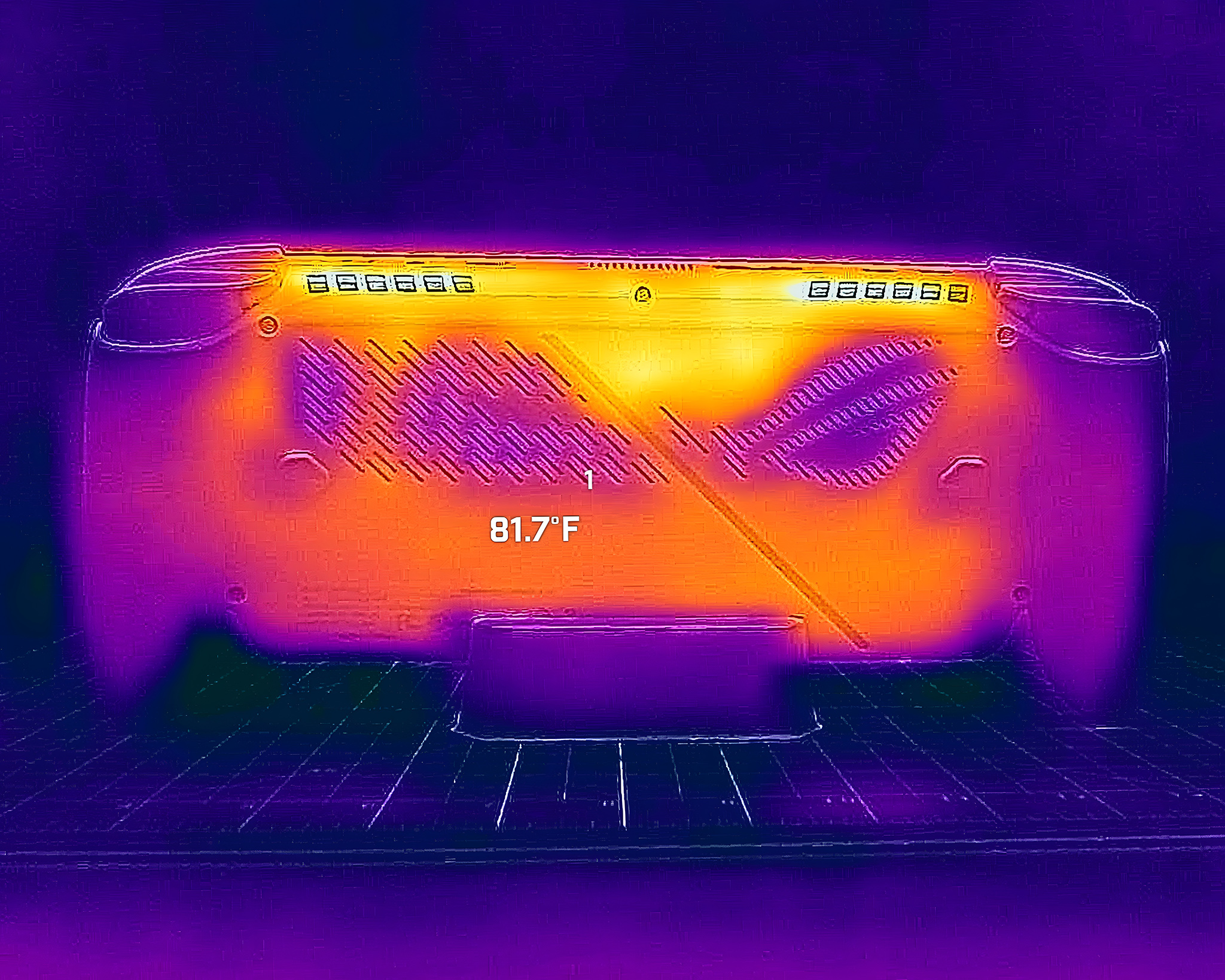
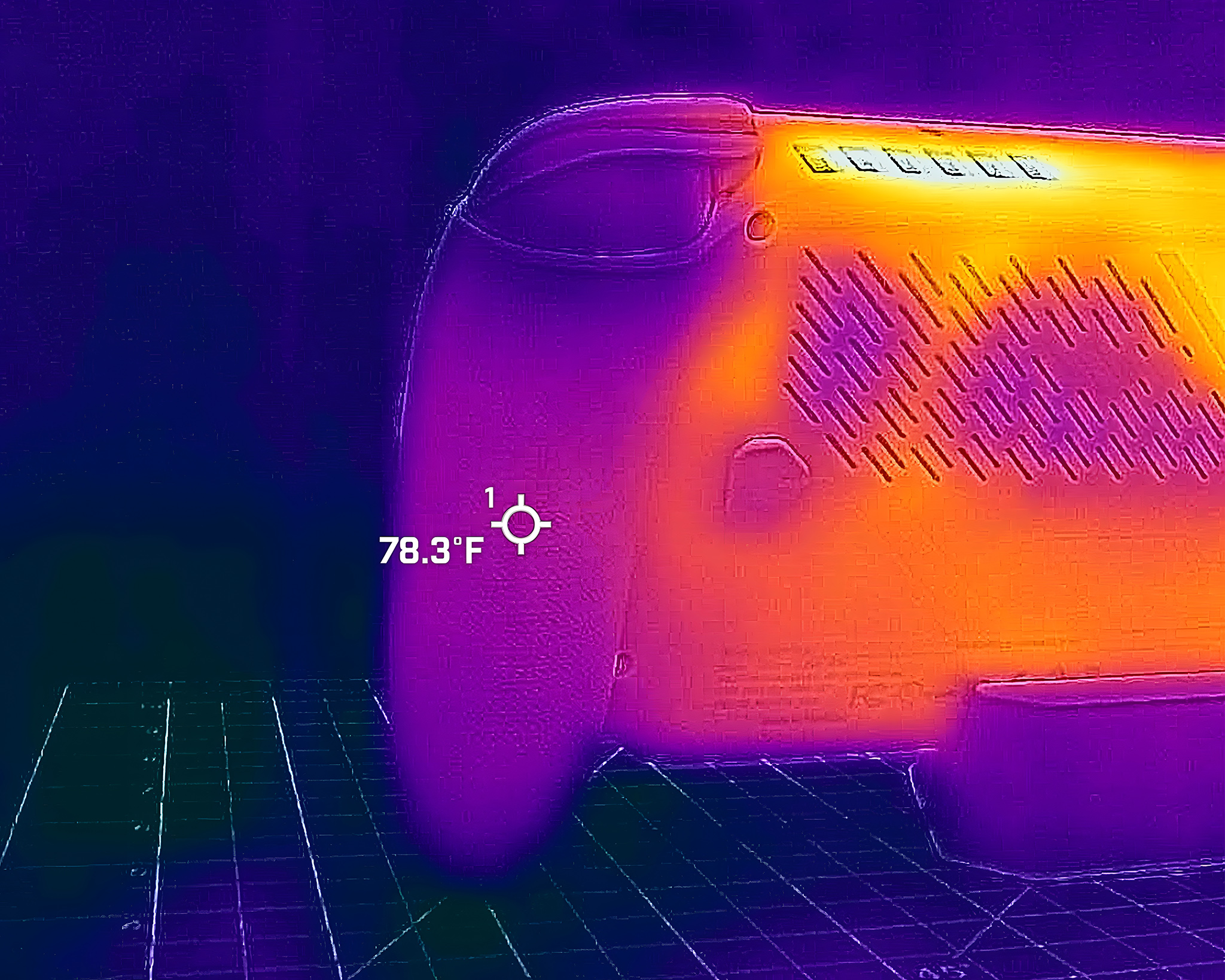
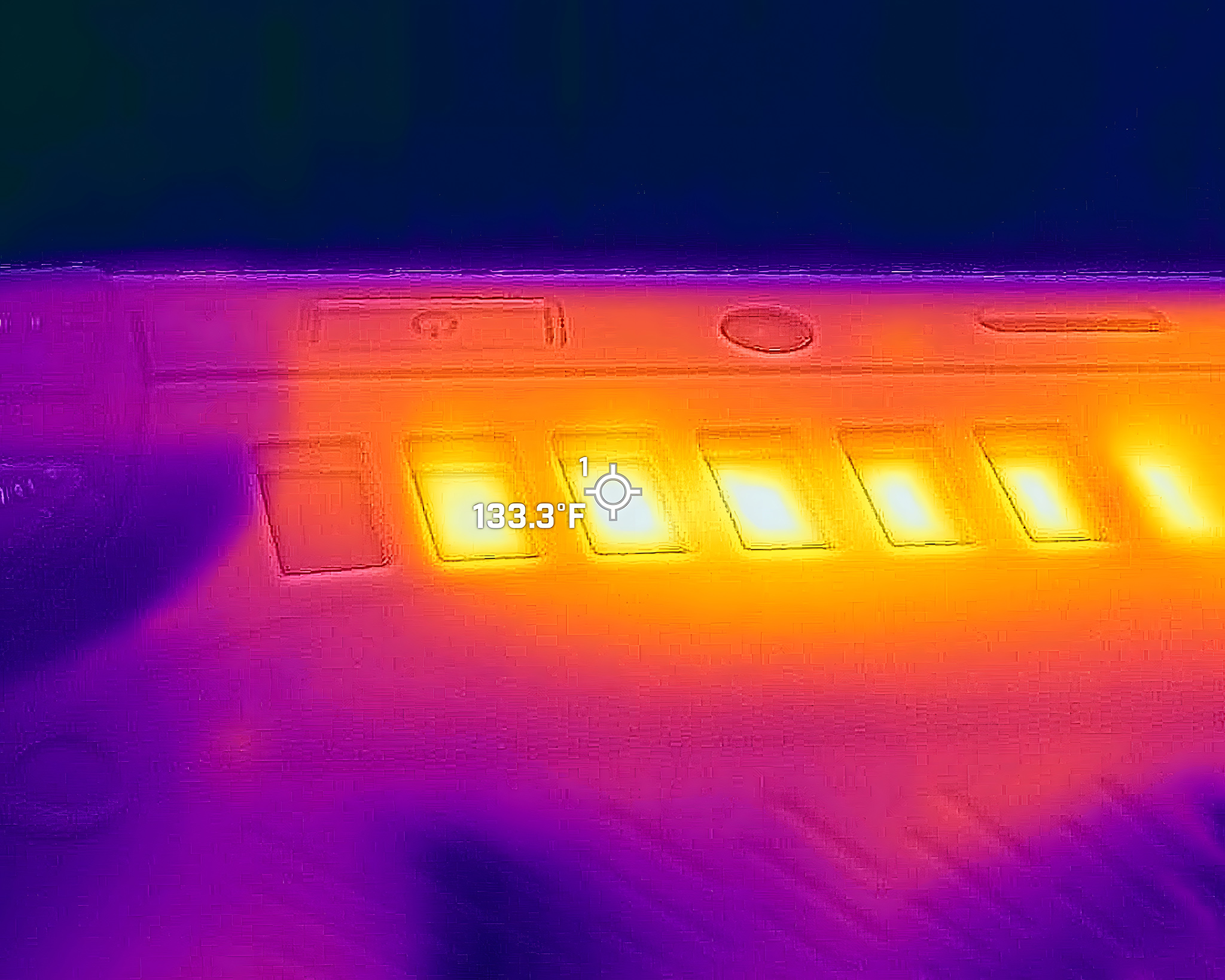
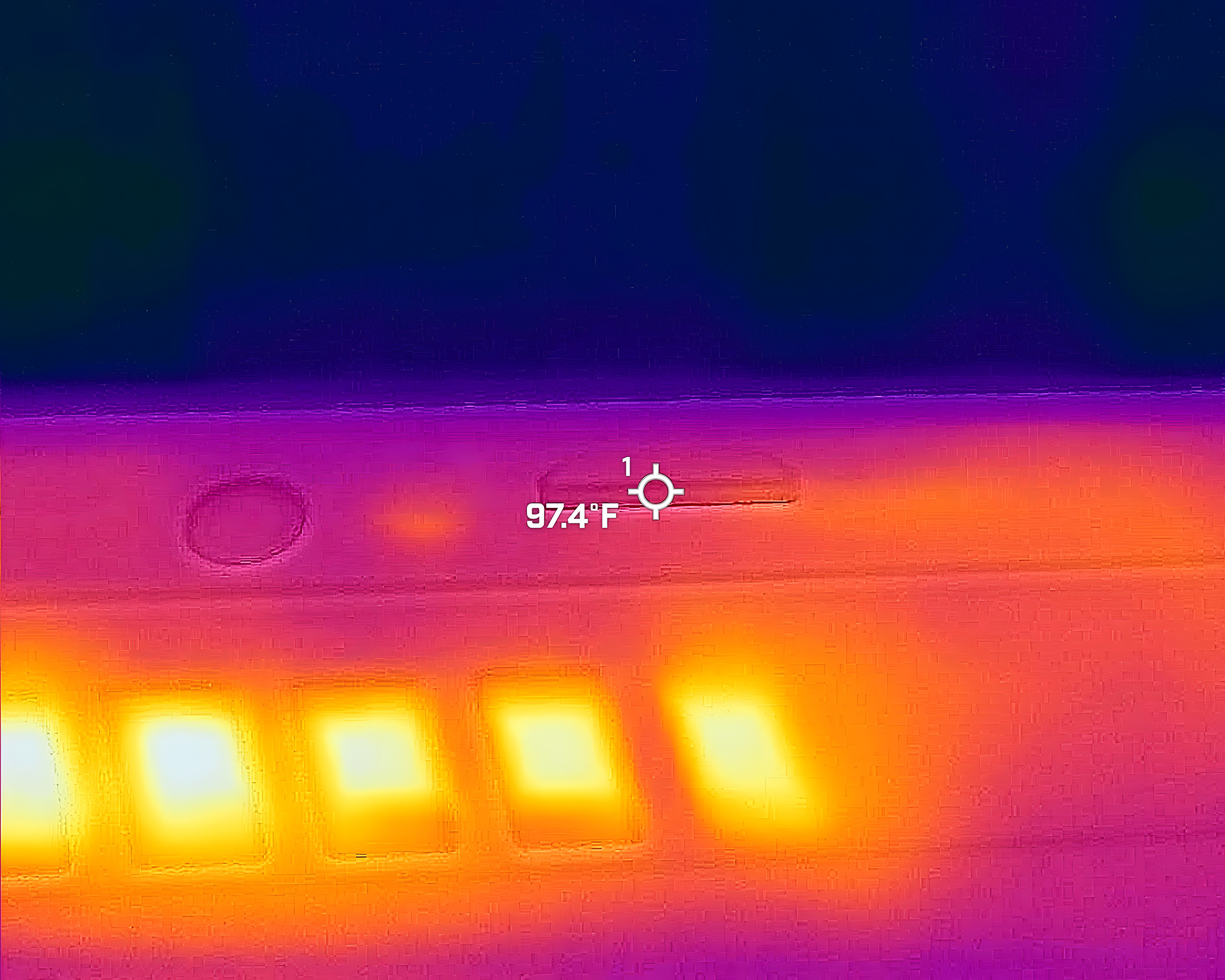
I ran the Xbox Ally through the same 20-minute CPU stress test that I ran the Xbox Ally X through before using a decibel meter to take measurements of the fan sounds.
In general, the Xbox Ally tends to run relatively quietly, only reaching a peak 43.5dB when measured right next to the events and a quieter 36.5dB when measured next to my ear while I'm holding the handheld in my other hand.
As far as the dual-fan cooling system goes, I noted via my thermal camera that the Xbox Ally tends to get slightly hotter than the Xbox Ally X within a 20-minute testing period, but still stays at a good temperature.
The Xbox Ally's hottest area was, of course, the vents, which measured in at a peak 133 degrees F (~56.1 degrees C). Meanwhile, the grips only reached a peak 78 degrees F (~25.5 degrees C) while the back peaked at 81 degrees F (~27.2 degrees C), so they don't get hot to the touch when gaming.
SOFTWARE & USER EXPERIENCE ⭐⭐⭐1/2
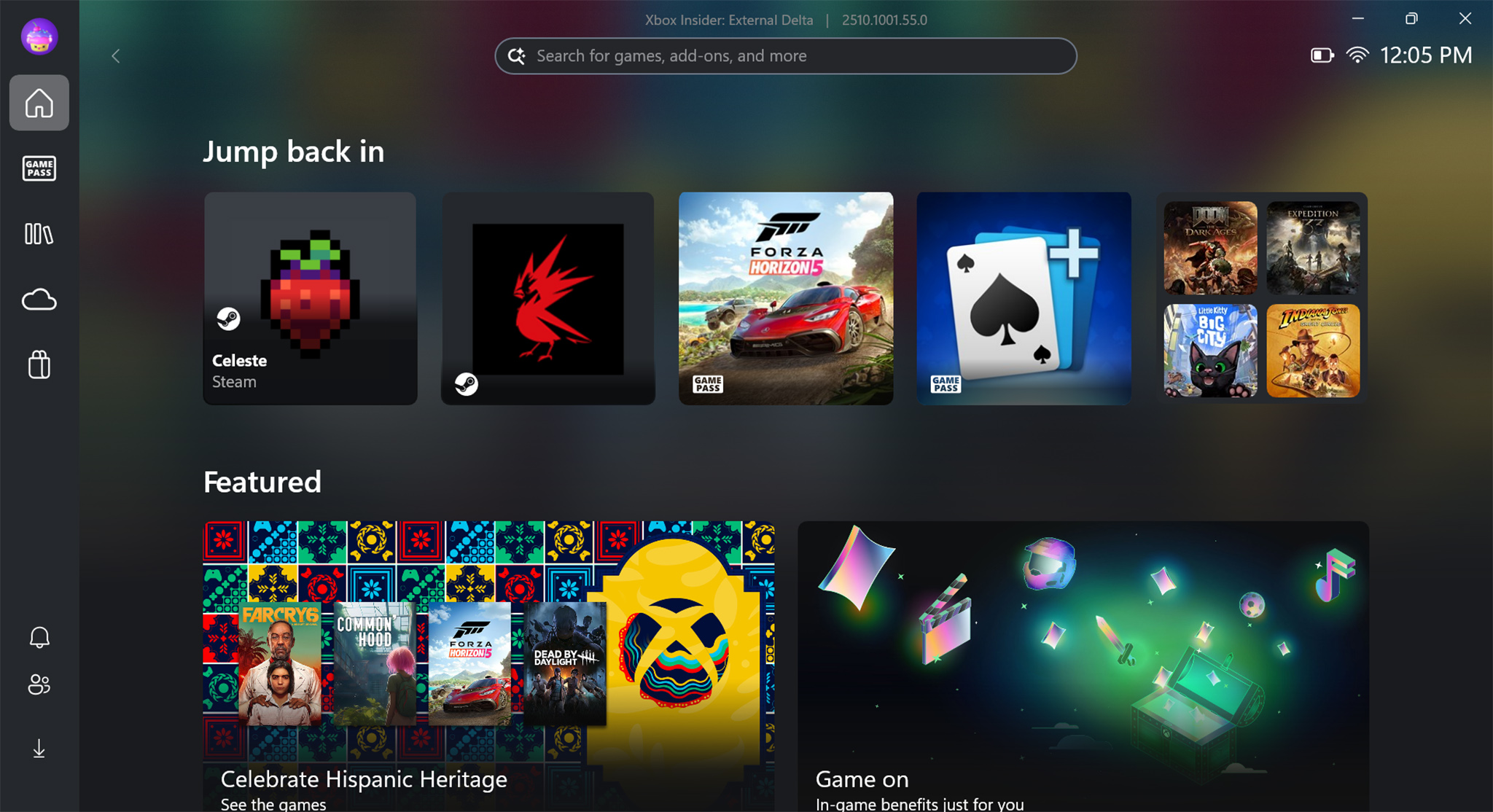
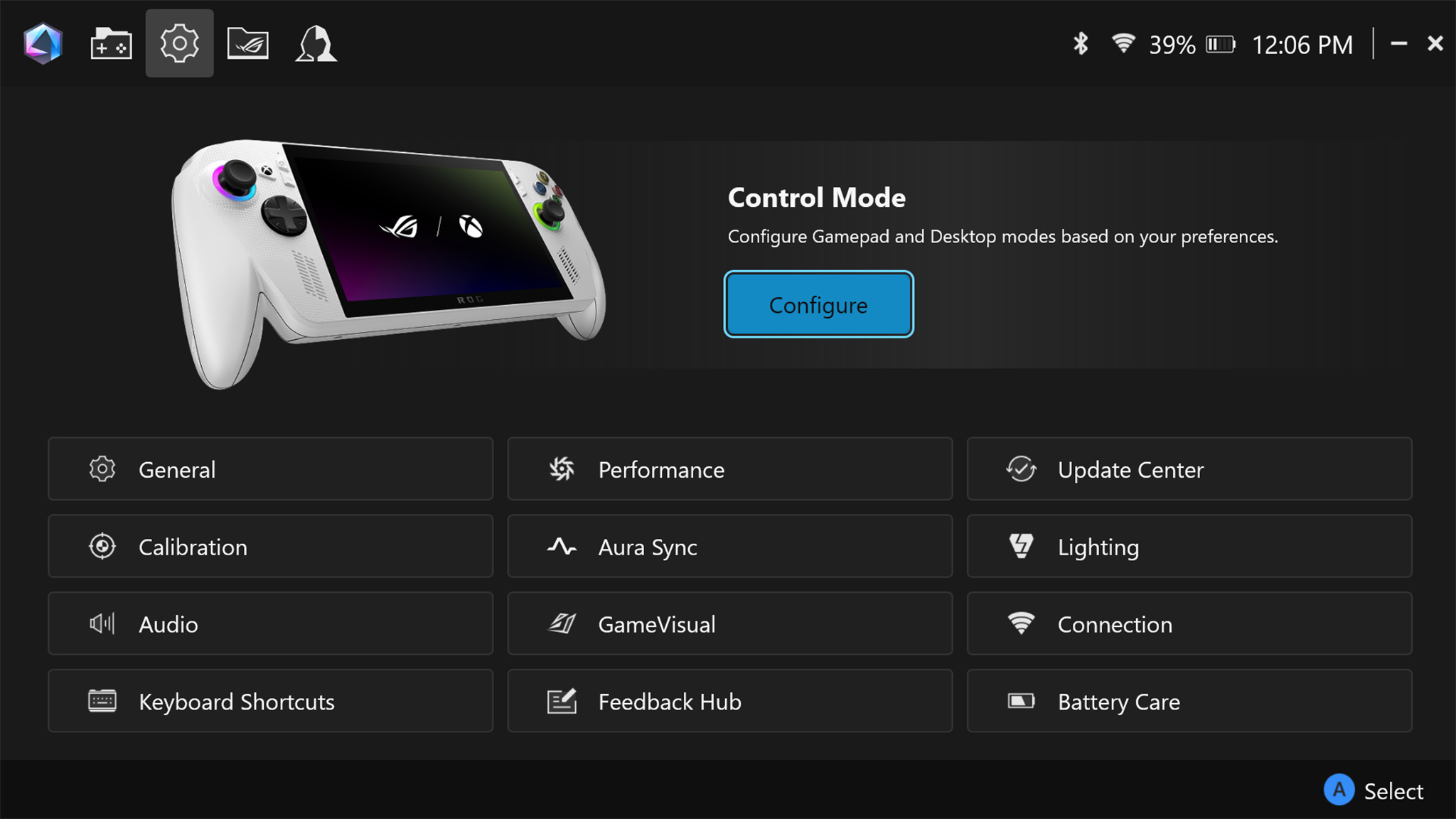
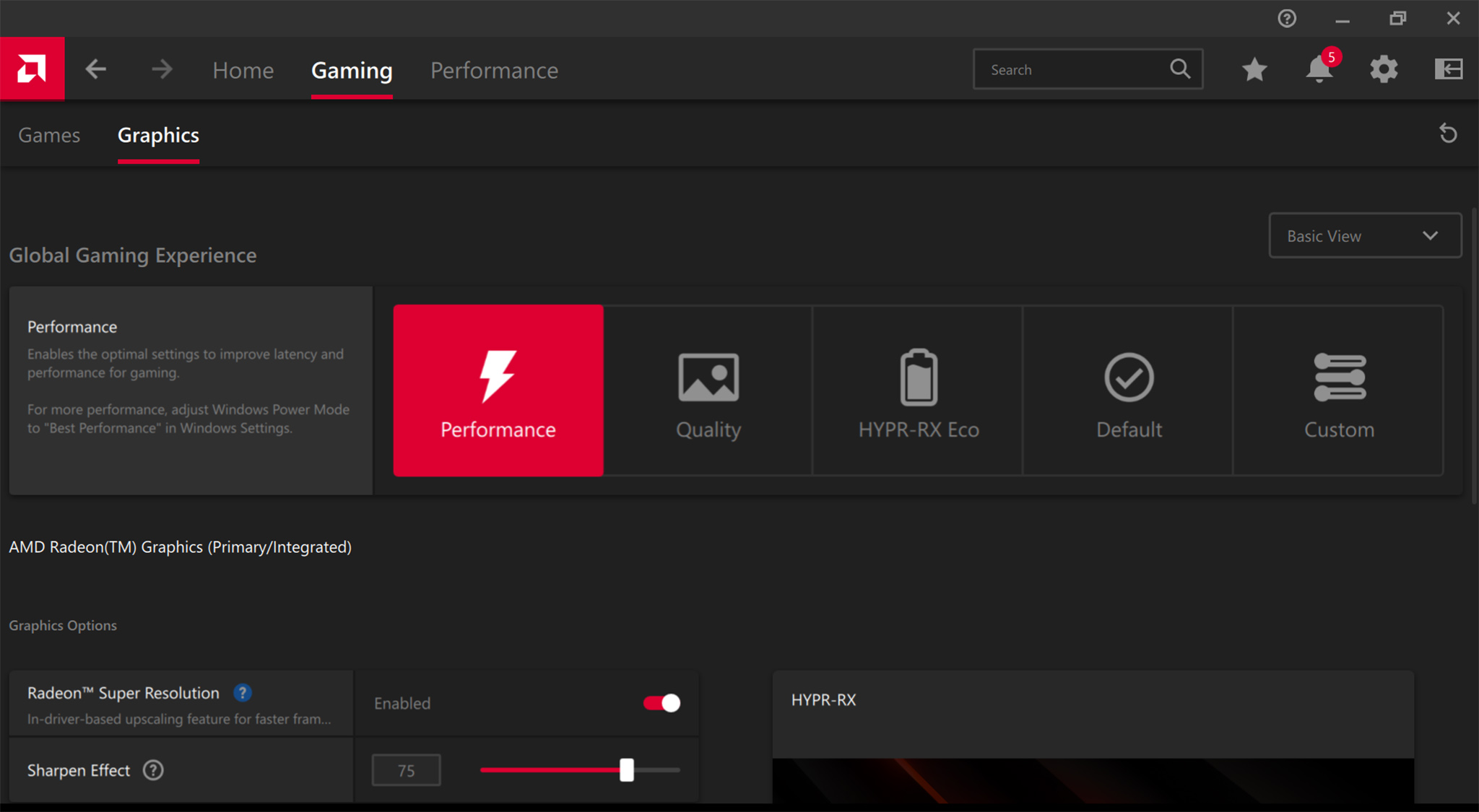
Much like the Xbox Ally X, the Xbox Ally enjoys a boosted software experience with improvements to Windows from Microsoft. Those improvements are heading out to all gaming handhelds in the future, but we're getting a good glimpse into what they'll end up looking like in the coming months.
The Xbox button on the Xbox Ally now defaults to a new full screen task view mode, which lets you seamlessly scroll between games and open apps on the system. The new Xbox Game Bar also gives you quick access to the ASUS Armory Crate settings to control TDP, resolution, and other things like that. It's far faster than the previous ASUS ROG implementation, and great to see overall.
The library button lets you easily dive into and out of the Xbox app for launching games, and it's all decently performant and vastly improved over earlier iterations.
However, huge issues still remain against the Xbox Store experience, which become even more crucial on a device like the Xbox Ally.
Microsoft says it is bringing things like a PC handheld performance handheld verification service to the Xbox PC Store, similar to Steam Deck's certification system. However, it was unavailable at the time of testing.
The issue there is, the Xbox PC store doesn't really recommend games (yet) that will actually run well on the Xbox Ally. The first game it recommended to me was Silent Hill F, which, as a photorealistic Unreal Engine 5 game, would barely run unless I knocked all the settings down to PS1-worthy levels.
The ecosystem at large doesn't have a very good discoverability engine behind it. Finding games on the Xbox Store is an absolute pain, as tags aren't visible, and screenshots aren't visible without jumping through hoops.
Steam offers a far more curated experience here, which helps developers get their games discovered, and helps customers discover new games. On a device like the Xbox Ally, which cannot run as many games available in the store, this type of curated experience is absolutely day zero critical. Alas, it is not there today.
The Xbox Ally also won't enjoy some AI software enhancements that its beefier Xbox Ally X sibling does, since it doesn't have the NPU. So no Auto SR, which might've helped game performance.
While the enhancements to the Windows installation wizard are welcomed, and the Xbox full screen experience brings these devices closer to console-like usability, the Xbox Store on PC is still a far, far cry from where it needs to be. This team needs vastly more resources, and it's difficult to gauge whether or not they'll get it before Microsoft gets bored and pulls the plug.
BATTERY LIFE ⭐⭐⭐⭐
As expected, the Xbox Ally's 60Whr battery lasted less than two hours when running more graphically demanding games. However, when I lowered performance settings to accommodate simpler games like Celeste, I was able to get the handheld to run for about seven hours and six minutes.
Since the Xbox Ally does have a Windows performance level, I also ran a battery test where the handheld only did office work, like running programs, writing documents, and attending video calls.
- 1 hr 48 mins — Cyberpunk 2077 (Steam Deck preset) on Turbo mode (20W) with screen at 68% brightness (around 200 nits).
- 7 hrs 6 mins — Celeste on Silent mode (6W) with screen at 25% brightness.
- 13 hrs 29 mins — Running basic office tasks like website browsing and document writing with screen on Windows mode (15W) at 68% brightness (around 200 nits).
While it's impressive seeing the Xbox Ally reach nearly 13.5 hours when being used like a work computer, it's still unfortunate to see that it's battery life when gaming isn't all that long.
Of course, this isn't really an ASUS ROG failing, this is just where battery technology is at this point.
Xbox Ally: Should you get it?
✅ You should buy this if ...
- You want a Windows handheld for cloud gaming
- You'd like a handheld with comfortable, ergonomic grips
❌ You should not buy this if ...
- You're looking for a handheld that can run AAA games locally on the device
- You'd prefer an OLED handheld or one with Hall effect joysticks that don't drift
There are far more flashy handhelds on the market right now, but the Xbox Ally presents a more affordable option for people to choose from.
Ideal for Xbox Cloud Gaming, NVIDIA GeForce NOW, and other cloud services, this handheld can take advantage of the performance offered by distant servers to stream games. It's also a great option for locally run games that aren't all that demanding, or titles that have been optimized to run well on Steam Deck.
In the end, its comfortable grips, convenient button layout, and lower price make it a decent choice for anyone wanting an entry-level Windows 11 handheld. However, you could easily use a phone or tablet if all you want is a cloud gaming device.

Follow Windows Central on Google News to keep our latest news, insights, and features at the top of your feeds!

Self-professed gaming geek Rebecca Spear is one of Windows Central's editors and reviewers with a focus on gaming handhelds, mini PCs, PC gaming, and laptops. When she isn't checking out the latest games on Xbox Game Pass, PC, ROG Ally, or Steam Deck; she can be found digital drawing with a Wacom tablet. She's written thousands of articles with everything from editorials, reviews, previews, features, previews, and hardware reviews over the last few years. If you need information about anything gaming-related, her articles can help you out. She also loves testing game accessories and any new tech on the market. You can follow her @rrspear on X (formerly Twitter).
- Jez CordenExecutive Editor
You must confirm your public display name before commenting
Please logout and then login again, you will then be prompted to enter your display name.
